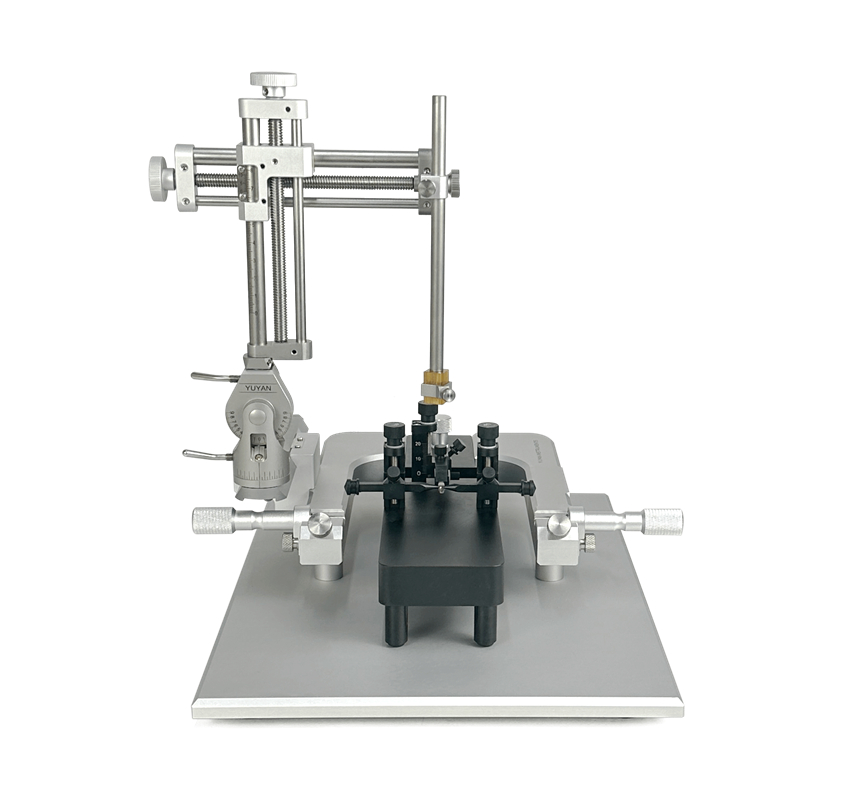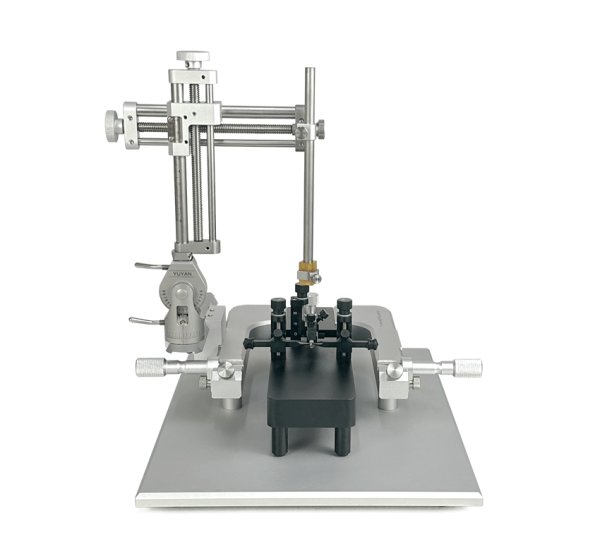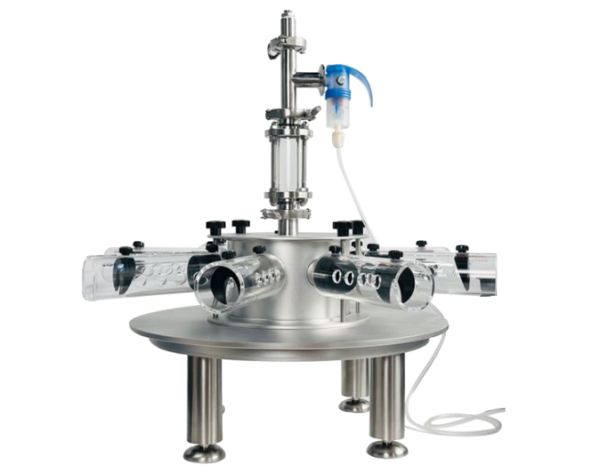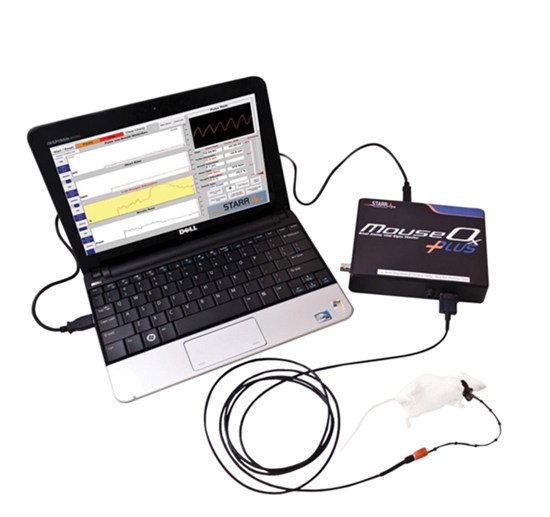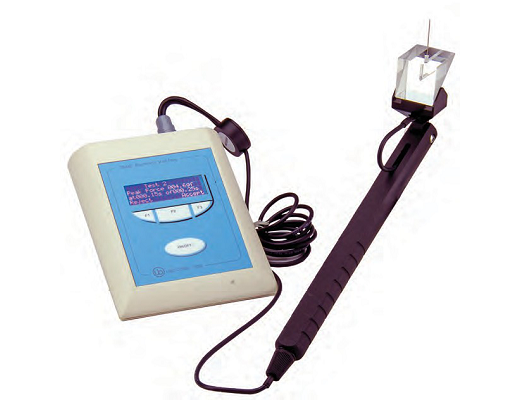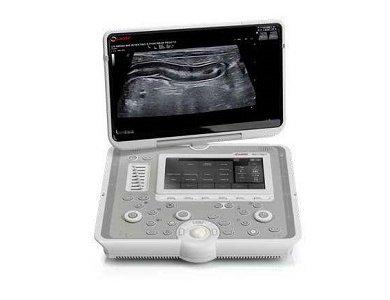玉研儀器 - 專注于生理、藥理、毒理等領域動物實驗儀器研發與供應
取消
清空記錄
歷史記錄
清空記錄
歷史記錄
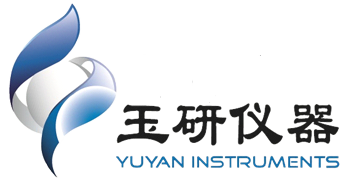

- 极度另类 | 久久久久一区二区三区 | 欧美色图另类 | 亚洲精品色午夜无码专区日韩 | 久久久久久久久久电影 | www.亚洲视频| 日韩在线视频一区 | www日本高清视频 | 在线一区二区三区四区 | 一区在线免费观看 | 99热欧美| 幸福宝在线观看 | 国产又粗又大又爽视频 | 色人阁在线视频 | 操到高潮视频 | 一区高清 | 福利电影一区 | 男男裸体gay猛交gay | 人人cao | 一区二区三区免费观看 | 韩国大尺度电影在线观看 | 国产探花一区 | 国产色自拍| 国产乱码精品一区二区 | 久久99精品久久久久久园产越南 | 人妻熟女一区二区aⅴ水 | 百合sm惩罚室羞辱调教 | 免费观看污污视频 | 四虎黄色 | 91av免费观看 | 日本va欧美va欧美va精品 | 麻豆蜜桃视频 | 国产传媒在线播放 | 艳妇臀荡乳欲伦交换电影 | www久久久久久 | 国产青草视频 | 国产精品aaa | 超碰中文字幕 | 无码黑人精品一区二区 | 欧美精品在线视频观看 | 日韩伦理在线播放 | 国产精品久久久久国产a级 日韩欧美色图 | 娇妻张妍交换高潮 | 日韩成人在线免费观看 | 午夜8888| 成人欧美一区二区三区黑人动态图 | 免费看a级片 | 涩涩视频在线看 | 女优天堂网 | 久久综合中文 | 人妻激情偷乱视频一区二区三区 | 韩国合集床戏三小时 | 欧美日韩国产免费观看 | 把高贵美妇调教成玩物 | 一边亲嘴一边做好爽视频 | 老女人丨91丨九色 | 成人无码一区二区三区 | 暖暖爱免费观看高清在线遇见你 | 台湾二级片 | 久久精品视频在线观看 | 欧美日韩精品亚洲精品 | 人妻少妇精品视频一区二区三区 | 久久久精品综合 | 蜜桃av色偷偷av老熟女 | 久草导航 | 男女尻逼视频 | 日本高清不卡视频 | 尤物视频在线观看免费 | 久久久久一 | 懂色av蜜臀av粉嫩av分享吧 | 日本美女动态图 | 人妻在客厅被c的呻吟 | 亚洲人 女学生 打屁股 得到 | 污污网站在线看 | 68日本xxxxxxxxx80 窝窝午夜视频 | 国产成人免费在线观看 | 美女扒开腿让男人桶软件 | 色天天综合网 | 日韩中文在线观看 | 欧美视频在线观看 | 欧美videos另类精品 | 精品黑人一区二区三区观看时间 | 欧美三级在线播放 | 久久一区 | 少妇口述老外性厉害 | 亚洲欧美v| 麻豆天堂 | 久久久久一区二区三区 | 一区二区三区四区免费视频 | 久久传媒 | 在线一区二区三区四区 | ass精品国模裸体欣赏pics | 激情内射亚洲一区二区三区爱妻 | 精品视频在线看 | 天天干女人 | 999免费视频 | 久久草视频在线 | 久久国产香蕉 | 高清中文字幕在线a片 | 1000部多毛熟女毛茸茸 | 精品国产乱码久久久久夜深人妻 | 丰满人妻综合一区二区三区 | 人妻熟女一区二区三区 | 灭火宝贝啄木鸟版本 | 国产成人无码精品久在线观看 | 成年人在线视频网站 | 国产精品一区二区三区在线播放 | 亚洲日本色 | 一级在线视频 | 欧美jizz18性欧美 | 777久久| 国产精品99在线播放 | 五月天黄色网址 | 国产精品久久久视频 | 青青草视频播放 | 四色成人| 婷婷色影院 | 打美女屁股网站 | 91麻豆精品国产91久久久久久 | 黑帮大佬和我的365日第二部 | 亚洲 激情 小说 另类 欧美 | 成人一级黄色片 | 玩弄人妻少妇500系列 | 污视频网站在线观看 | 女同学裸开双乳让我吃 | 国产激情无套内精对白视频 | 国产精品久久久久久久9999 | 播放男人添女人下边视频 | 人人插人人搞 | 99精品在线观看 | www.桃色av嫩草.com | 麻豆亚洲av成人无码久久精品 | 成人精品在线播放 | 亚洲精品自拍视频 | 非洲黄色一级片 | 天天影视综合 | 亚洲逼院 | 青春草av | 国产白丝精品91爽爽久久 | 强行按在桌上糟蹋进入 | 亚洲成人午夜电影 | av在线一区二区三区 | 欧亚乱熟女一区二区在线 | 久草视频免费在线播放 | 九九精品视频在线 | 女人被躁的高潮嗷嗷叫 | h动漫精品3d动漫3d动漫在线 | 快播怡红院 | 18女人毛片 | 国产成人激情 | www.久久久.com | 孕妇xxxxx孕交xxxxx | 水蜜桃一区二区三区 | 欧洲成人在线 | 国产 精品 日韩 | 又黄又爽国产 | 美女精品| av免费网站 | 日韩在线视频中文字幕 | 国产人妻精品一区二区三区不卡 | 内衣办公室动漫在线观看 | 国产人妖ts重口系列网站观看 | 伸进裙子里揉呻吟声高潮 | 美女国产在线 | 欧美最猛黑人xxxx黑人猛交 | h双腿涨灌触手play慎入视频 | 豆花视频在线 | 成年人在线播放 | 久操香蕉 | 成人在线中文字幕 | 无码人妻丰满熟妇区五十路 | 日本三级日本三级日本三级极 | 四虎影院永久 | 久久综合伊人77777麻豆 | 香蕉av在线播放 | 狠狠狠狠狠狠狠狠 | 日日摸日日添日日碰9学生露脸 | 一本一道人人妻人人妻αv 91亚洲视频 | 小俊大肉大捧一进一出好爽 | 精品黑人一区二区三区观看时间 | 蜜桃久久久久 | 爱爱小视频网站 | 欧美黄色大片网站 | 国产一区二区三区免费在线观看 | 好吊妞在线 | 一区二区在线免费观看 | 国产探花一区 | 日本在线视频网 | 精品一区二区三区免费观看 | 国产福利一区二区三区 | 操操操操操操操 | 午夜精品久久久 | 欧美三区 | 久久观看 | 尤物视频在线观看免费 | 陪读麻麻张开腿让我爽了一晚播放 | 国产精品美女 | 99热在线播放 | 成人在线中文字幕 | 欧美伦理片 | 免费h片 | ass精品国模裸体欣赏pics | 欧美自拍偷拍 | 亚洲精品传媒 | 久久神马 | 中文字幕乱码无码人妻系列蜜桃 | 久久精品首页 | 男男一级淫片免费播放 | 极品91尤物被啪到呻吟喷水漫画 | 伊人色影院 | 岳奶大又白下面又肥又黑水多 | 亚洲天堂一区二区 | av毛片网 | 亚洲欧美另类图片 | 久草欧美| 波多野结衣家庭教师6 | xxx在线播放| 成人青青草 | 公和我乱做好爽添厨房中文字幕 | 国产免费av电影 | 成人春色影视 | 激情第四色 | 在线不卡av电影 | chinese叫床对白videos | 日日夜夜狠狠干 | 亚洲经典视频 | 成人app在线观看 | www久久久 | 免费观看污污视频 | 亚洲精品久久久久avwww潮水 | 亚洲天堂一区二区 | av在线一区二区三区 | 欧美精品91 | 中文字幕人妻精品一区 | 丰满的妻子 | 粉嫩aⅴ一区二区三区四区五区 | 久久一区| 亚洲我射av| 欧美肥妇bbw| 亚洲欧美另类图片 | 69精品在线 | 爱爱小视频网站 | 青青色视频 | 亚洲人成人无码网www国产 | 午夜三级网 | 中出中文字幕 | 欧美成人精品一区二区三区 | 日韩经典在线 | 午夜精品久久久久久久第一页按摩 | 午夜免费在线观看 | 999视频在线 | 一级aaa毛片 | 91网页版 | 欧美999| 老男人玩的我太爽啦 | 欧美成人自拍 | 免费三片在线观看网站v888 | 久久久久无码精品国产 | 美女天天干 | 91中文字幕在线播放 | 日韩女优在线播放 | 色黄网站在线观看 | 精品国产99久久久久久 | 国产精品久久久久久69 | 我们的2018在线观看免费高清 | 日本污网站| 青春草av | 欧美夜夜夜| 欧美理论在线观看 | 久久99精品国产麻豆婷婷洗澡 | 双乳被四个男人吃奶h文 | 禁欲天堂| 免费av一区二区三区 | 天天爽夜夜爽夜夜爽精品视频 | 成人精品视频一区二区三区尤物 | 少妇99 | 午夜精品久久久久久久第一页按摩 | 538在线精品| 99国产免费 | 亚洲男人的天堂在线 | 99精品免费视频 | 欧美三级视频在线 | 久久e久久| 亚洲综合色网 | 小说h视频| 久久e久久 | 野外猛男的大粗鳮1巴 | 亚洲少妇激情 | 亚洲精品无码久久 | 北京富婆泄欲对白 | 丁香花完整视频在线观看 | 午夜三级网 | 久久首页 | 国产精品嫩草影院桃色 | 日韩不卡一区 | 在线成人观看 | 骚虎在线观看 | 激情小说亚洲图片 | 黑人一区二区 | 午夜一级免费 | 丁香花完整视频在线观看 | 国产免费久久 | 日韩日b视频 | 成人免费福利 | av亚州| 亚洲av无码一区二区乱子仑 | 中文字幕――色哟哟 | 日本成人小视频 | 国产色自拍| 欧美色亚洲 | 精品人妻一区二 | 李丽珍毛片未删减免费观看 | 日本免费高清一区 | 五月激情婷婷综合 | 亚洲成在线 | 超碰成人av | 成人av一区二区三区在线观看 | 色婷婷免费观看 | 免费一级黄色片 | 日韩另类小说 | 尹人久久| 亚洲美女在线视频 | 中文字幕第一 | 日韩在线你懂的 | 在线视频免费播放 | 国产一区一区 | 日本美女一级视频 | 黄色动漫软件 | 久久久久无码精品国产 | 夜夜爱视频 | 岛国av网址 | 久久久一区二区三区四区 | 性欧美视频在线观看 | 五月激情网站 | 中文字幕第六页 | 永久免费在线看片 | xxxxwwww免费 | 蜜桃久久久久 | 中文字幕在线播放av | 又爽又黄视频 | 国产精品一级在线 | 中国女人裸体乱淫 | 一区在线免费观看 | 熟女人妻一区二区三区免费看 | 91禁国产 | 精品国产aⅴ一区二区三区东京热 | 成人av一区二区三区在线观看 | 麻豆成人免费视频 | 人人草在线 | 性久久久久久久 | 亚洲精品国产精品乱码不卡 | 男女又爽又黄 | 久久精品爱 | 久久亚 | 四虎tv| 51啪影院 | 成人动态视频 | 淫刑训诫学校(sm)调教 | 丁香婷婷六月 | 天堂在线 | 天堂成人在线视频 | 伦理片精油按摩 | 欧洲免费av | 韩国成人三级 | 成人av一区二区三区在线观看 | 93久久精品日日躁夜夜躁欧美 | 国产做受高潮 | 亚洲福利电影 | 九九热只有精品 | 不用播放器av | www.黄色在线观看 | 猫咪av在线 | 黄色a大片| 人妻熟女一区二区aⅴ水 | 亚洲三级视频在线观看 | 中文字幕在线永久 | 欧美毛片视频 | 91国产大片 | 亚洲成人精品在线观看 | 一本大道久久久久精品嫩草 | 九色自拍 | 男生把手放进我内裤揉摸好爽 | 68日本xxxxxxxxx80| 黄色在线免费网站 | 好吊妞在线 | 纲手鸣人本子 | 张柏芝54张无删码照无删减 | 亚洲天堂女人 | 美日韩精品| va在线观看 | free嫩白12sex性摘花 | 性孕妇free特大另类 | 成人无码一区二区三区 | 无码国产精品一区二区免费式直播 | 日本免费中文字幕 | 黄黄小视频 | 夜夜爱视频| 久久久免费观看视频 | 日日操夜夜干 | 影音先锋成人 | 日韩一区二区视频在线 | 99热在线看 | 暖暖爱免费观看高清在线遇见你 | 欧美日韩xxx| 午夜色片 | 免费在线观看你懂的 | 亚洲观看黄色网 | 温柔善良的儿媳妇免费大结局 | 久久婷婷色 | 青青草激情视频 | 一级片欧美 | 国产精品亚洲一区二区无码 | 一边亲嘴一边做好爽视频 | 嘿咻免费视频 | 永久免费精品 | 韩国电影一区二区三区 | 精品国产一区二区三区久久久蜜月 | 99热在线看 | 国产精品一卡二卡三卡 | 爱爱帝国 | 九一亚色| 激情丁香六月 | 久久久久99精品成人片三人毛片 | 人妻少妇精品视频一区二区三区 | 香蕉av在线播放 | 国产精品成人无码免费 | 久热只有精品 | 萝稚嫩紧窄h乱j交h 日韩在线不卡 | 中文字幕乱码无码人妻系列蜜桃 | 熟睡侵犯の奶水授乳在线 | 极品一线天小嫩嫩真紧 | 国产精品无码在线播放 | 午夜精品久久久 | 69精品在线 | 师尊撅着屁股边挨脔边挨打屁股 | 在线观看中文 | 97国产视频 | 视频在线免费观看 | 少妇av网| 最近中文字幕在线观看 | 四虎网站在线观看 | 鲁丝一区二区三区 | 在线国产日韩 | bl无遮挡高h动漫 | 成人av一区二区三区在线观看 | 欧美日韩国产免费观看 | 中文在线永久免费观看 | 日韩电影中文字幕在线观看 | 张静初被弄得高潮迭起 | 热久久免费视频 | 日本三级日本三级日本三级极 | 欧美日韩伦理 | 色中色综合 | 91麻豆精品91久久久久同性 | 亚洲一区二区三区无码久久 | 在线看黄免费 | 福利视频导航网站 | 天天操bb | 免费观看毛片视频 | 国产伦精品一区 | 久久久久久久九九九九 | 我的邻居在线观看 | 无套白嫩进入乌克兰美女 | 亚洲综合激情网 | 无遮挡边吃摸边吃奶边做 | 美女隐私免费视频 | 少妇搡bbbb搡bbb搡澳门 | 精品欧美一区二区三区久久久 | 免费av片 | 啪啪一区二区 | 亚洲精品国 | 人妻洗澡被强公日日澡电影 | 日本美女一级视频 | 开心激情网五月天 | 九九热九九热 | 国产成人精品在线 | av大片在线观看 | 国产做a爰片aaaaaoooo | 亚洲最大成人在线 | 日韩一区二区三区在线视频 | 尤物最新网址 | av在线天堂 | 热久久免费 | 日老女人的b | 国产激情免费 | 蜜臀av免费 | 午夜啪啪网 | 伦理吸我的奶水hd | 久久伊人网站 | 国产91精品久久久久久久网曝门 | 久久久久久久久久91 | 亚洲男人天堂 | 男人操女人下面 | 精品1区2区| 少妇高潮一区二区三区69 | 我和岳交换夫妇爽4p晓娟小说 | 亚洲 欧美 激情 小说 另类 | 美女扒开尿口让男人捅 | 五月婷婷激情网 | 国产传媒av | 农村老妇性真猛 | 纲手鸣人本子 | 黑人一区二区 | 五月天黄色网址 | 亚洲熟妇无码久久精品 | 中国美女洗澡免费看网站 | 午夜精品福利在线观看 | 午夜视频网 | 女人被躁的高潮嗷嗷叫 | 蜜臀av一区二区三区有限公司 | 日韩视频在线免费观看 | 性色av一区二区三区免费 | 黑人精品xxx一区一二区 | 青苹果乐园电影在线观看免费 | 中文字幕乱码无码人妻系列蜜桃 | 国产黄色在线观看 | 娇小的粉嫩xxx极品 极品一线天小嫩嫩真紧 | 非洲黄色一级片 | 国产1页 | flower免费观看完整版动漫 | 99这里只有精品 | 亚洲无毛| 国产a一区 | 久久草视频在线 | 日本人亚洲人jjzzjjz | 老司机精品福利视频 | 韩国精品在线 | 师生出轨h灌满了1v1 | 欧美videos另类精品 | 精品久久久国产 | 国产成人午夜视频 | 丰满人妻一区二区三区四区 | 国产成人免费在线观看 | www黄在线观看 | 欧美夜夜夜 | 娇妻1~29被部长玩的经过高h | 国产精品一区av | 亚洲欲色| 精品无码人妻一区二区三区 | 成人羞羞国产免费图片 | 国产在线免费观看 | 久草欧美 | 香蕉视频黄版 | 与子敌伦刺激对白播放的优点 | 日本午夜 | 一家人乱操| 久青草视频在线观看 | 日韩中文字幕在线观看 | 日韩黄色av | 少妇高潮一区二区三区69 | 电影午夜精品一区二区三区 | 成人精品视频一区二区三区尤物 | 中文字幕影院 | 国产成人在线视频观看 | 住在隔壁的她动漫免费观看全集下载 | www.麻豆传媒 | 日韩视频免费 | 黄色小说视频网站 | 国产又粗又长又爽 | 久久久18禁一区二区三区精品 | 国产丝袜在线视频 | 操老阿姨 | 黄色国产精品 | 殴美一级片 | 久久久久久97 | 九九视频免费 | 国产福利网 | 伊人日本| 亚洲大胆视频 | 无套内谢的新婚少妇国语播放 | 91av视频在线免费观看 | 啪啪网站大全 | 国产精品亚洲一区二区 | 色婷婷导航 | 国产视频999 | 中文字幕制服诱惑 | 1769在线视频 | 国产乱码精品一区二区 | 色资源站| 一区二区av在线 | 伦理吸我的奶水hd | 久久久久久久黄色 | 国产第一精品视频 | www.欧美在线 | 久草导航| 女人裸体添荫蒂视频 | 懂色av粉嫩av蜜乳av | 男女又爽又黄 | 北条麻妃一区二区在线观看 | 久久午夜视频 | 最近中文字幕在线视频 | 少妇人妻偷人精品一区二区 | 99re视频在线 | 激情丁香六月 | 又黄又爽国产 | 男插女青青影院 | 美国一区二区三区 | 美女天天干 | 电影午夜精品一区二区三区 | 日韩午夜在线观看 | 尤物天堂| 色优久久| 小鲜肉裸体gayxnxx | 久久精品网 | 人妻洗澡被强公日日澡电影 | 久热这里只有 | 狠狠人妻久久久久久综合蜜桃 | 国产精品一区电影 | 青青草娱乐视频 | sm丝袜麻麻捆绑调教高潮 | 亲嘴激烈床视频大全床 | 九九热这里只有精品6 | 人妻少妇精品视频一区二区三区 | 国精产品一二三区精华液 | 在线免费观看亚洲 | 人人操在线播放 | 国产污污 | 成人黄色一级 | 五月婷婷视频 | 久久男人的天堂 | 少妇4p | 又黄又爽国产 | 日日操夜夜干 | 欧美激情精品久久久久久变态 | 黑人一区二区 | 精品在线视频一区 | 把高贵美妇调教成玩物 | 深爱激情综合网 | 87福利视频 | 欧美国产激情 | 免费视频色| 合欢视频在线观看 | 中文字幕免费播放 | 中文在线а√在线8 | 伊人超碰 | 好大好紧好硬好硬口述 | 后进极品美女圆润翘臀 | 被室友脱了内裤打屁屁spank | 欧美亚洲激情视频 | 欧美性色19p | 超碰国产在线 | 欧美日韩a | 精品人妻少妇AV无码专区 | 四虎精品 | 日本女人黄色片 | 夜夜爱视频 | 欧美黑人一级爽快片淫片高清 | 亚洲视频第一页 | 亚洲欧洲在线视频 | 中文字幕免费av | 免费香蕉视频 | 动漫美女被艹 | 少妇福利视频 | 日批视频 | 密臀av一区 | 久久精品片 | 国产精品久久久久久69 | 亚洲精品视频二区 | 麻豆91av| 陪读偷伦初尝小说 | 亚洲国产精品成人久久蜜臀 | 欧美精品一 | 五月情网| 高h在线观看 | 国产色视频一区二区三区qq号 | 成年人在线免费 | 日本高清不卡码 | 韩国成人三级 | 超碰超碰超碰超碰超碰 | 欧洲熟妇的性久久久久久 | 毛片在线网站 | 激情内射亚洲一区二区三区爱妻 | 久热只有精品 | 国产精品自产拍高潮在线观看 | 6699嫩草久久久精品影院 | 亚洲成人www| 男生和女生操的视频 | 男女插插插 | 午夜久久视频 | 国产三级漂亮女教师 | 日日操夜夜干 | av在线一区二区三区 | 女儿的朋友在线播放 | 台湾同性男男gayxxxx | 亚洲精品日韩在线 | 四虎亚洲精品 | 殴美一级片| 我们的2018在线观看免费高清 | 内衣办公室动漫在线观看 | 国产免费a级片 | 久久成人综合 | 后入内射欧美99二区视频 | 中文在线不卡 | 精品网站999www| 人妻毛片| 超级碰碰97 | 久久99精品久久只有精品 | 国产在线视频一区 | 成人黄色免费看 | 黄色污污视频 | 李丽珍毛片未删减免费观看 | 天天摸天天 | 陪读麻麻张开腿让我爽了一晚播放 | 激情国产 | 97激情| 日韩国产一区二区 | 国产精品99在线播放 | 亚洲成人免费在线观看 | 香蕉视频成人在线观看 | 欧美精品亚洲精品日韩精品 | 快猫成人短视频 | 中文字幕有码视频 | 久久色av| 国产超碰人人爽人人做人人爱 | 岛国成人在线 | 一区二区三区观看 | 男人猛吃奶女人爽视频 | 毛片在线免费播放 | 成人啪啪漫画羞羞漫画 | 午夜性视频| 操大胸美女 | 亚洲精品国产精品乱码不卡√香蕉 | 99热在线播放 | 97国产视频 | 韩国电影黄色片 | 久久怡红院 | 成人动漫一区二区三区 | 后入内射欧美99二区视频 | 黄色短视频在线观看 | 青青草97国产精品麻豆 | 女人的呻吟声 | 国产激情无套内精对白视频 | 久草视频精品 | 操女人的逼视频 | 中文字幕日本在线观看 | 性欧美视频在线观看 | 蜜桃无码一区二区三区 | 香蕉视频成人在线观看 | 欧美成人精品一区二区三区 | 激情图片在线视频 | 久久观看 | 美女扒开尿口给男人捅 | 甜性涩爱韩国hd未删在线 | 日韩欧美午夜 | 丰满人妻综合一区二区三区 | 窝窝午夜视频 | 神马久久影院 | 性欧美精品动漫 | 高潮毛片 | 国产精品成人免费视频 | 国产精品视频久久久 | 风流小鲜肉gay猛男 四虎影院永久地址 | 国产又粗又大又爽视频 | 国产精品久久久久久久免费看 | 国产永久精品大片wwwapp | 亚洲福利在线视频 | 国产网站视频 | 亚洲男人的天堂在线 | 中文字幕三级电影 | 一区二区精品 | 欧美经典三级 | 亚洲一区二区三区免费视频 | 久草视频免费在线播放 | 久草视频免费在线播放 | 亚洲妇女体内精汇编 | 亚洲色吧 | 爱的人电影全集免费观看 | 丰满肉肉bbwwbbww| 污视频在线观看网站 | 婷婷综合激情 | 99精品热视频 | 中国少妇无码专区 | 公和我乱做好爽添厨房中文字幕 | 伸进裙子里揉呻吟声高潮 | 日本高清不卡码 | 老熟妇精品一区二区三区 | ass东方小嫩模pics | 美女人人操 | 2017日日夜夜 | 在线看黄色的网站 | 中文字字幕在线 | 一区二区三区伦理 | 污污网站在线观看 | 日本高清不卡视频 | 亚洲美女福利视频 | 国产原创剧情av | 青青草97国产精品麻豆 | 国产精品自拍第一页 | 成人欧美一区二区三区黑人动态图 | 青青草97国产精品麻豆 | 免费看黄网址 | 青草综合 | 国产精品久免费的黄网站 | 无遮挡边吃摸边吃奶边做 | 日本在线免费视频 | 超级黄色录像 | 香蕉在线播放 | 亚洲欧洲另类 | 中文字幕天堂在线 | 特黄a级片 | 欧美极品另类 | 亚洲成人另类 | 一区二区三区在线看 | 五月婷婷视频 | 欧洲熟妇的性久久久久久 | 人妖交videohd另类 | 非洲黄色一级片 | 99re6这里只有精品 | jizz动漫| 国产原创在线播放 | 一级aaa毛片 | 国产永久精品大片wwwapp | 特高潮videosexhd| 日本乱码视频 | 草莓视频在线观看网站 | 黄色在线直播 | 99久久综合 | 亚洲国产成人久久 | 亚洲天堂999 | 邻居交换做爰2 | 在线麻豆视频 | xxfree性黑人hd4k高清 | 人人91| 黄色麻豆视频 | 伊人av在线播放 | 超碰夫妻 | 小俊大肉大捧一进一出好爽 | 视频在线免费观看 | 久久久久久久黄色 | 最新中文字幕av | 欧美在线视频网 | 深爱激情综合网 | 精品一区二区av | 国产91精品久久久久久久网曝门 | 高清国产mv在线观看 | 丰满少妇xoxoxo视频 | 电影午夜精品一区二区三区 | 久久中文在线 | 手机看片欧美 | 久草热在线视频 | 亚洲男人天堂2018 | 性久久久久久久 | 日本免费中文字幕 | 粉嫩aⅴ一区二区三区四区五区 | 婷婷九九| 美女无遮挡免费视频 | 黄视频免费在线观看 | 久久久久久久艹 | 亚洲综合视频在线 | 日本中文字幕网 | 成人免费一区 | 五月婷婷,六月丁香 | 男人把女人捅爽 | 国产人妖ts重口系列网站观看 | mm131视频| 伦理一区二区 | 激情图片在线视频 | 91黄站| 双乳被四个男人吃奶h文 | 色综合久久88色综合天天 | 国产白袜男gaychina白袜男生 | 91精品国产综合久久福利软件 | 一区二区三区四区免费视频 | 亚洲天堂日本 | 日本网站在线播放 | 99热综合 | 人人射人人插 | 久久综合影院 | 免费三片在线观看网站v888 | 麻豆国产欧美日韩综合精品二区 | av日在线 | 中文在线免费视频 | 日韩aaaaaa| 91av久久 | 色激情五月 | 欧美日韩精品一区二区三区 | 九九久久免费视频 | 尹人久久 | free嫩白12sex性摘花 | 一个色的综合 | 中文字幕乱码视频 | 成人一区二区在线观看 | 6699嫩草久久久精品影院 | 成年人网站在线免费观看 | aaaa黄色| 高清中文字幕在线a片 | 羞羞羞很疼30分钟无遮盖 | 国产第一精品视频 | 免费看黄色a级片 | 99久久99久久精品国产片果冰 | 亚洲福利在线视频 | 黄骗免费网站 | 精品伊甸园 | 亚洲精品在线免费 | 温柔善良的儿媳妇免费大结局 | 张柏芝54张无删码照无删减 | 啪啪网站大全 | 校园春色亚洲色图 | 欧美色图另类 | 娇妻在黑人胯下哀求高潮 | h在线观看 | 欧美精品在线视频观看 | 秋霞午夜伦理 | 西西444www大胆高清图片 | 亚洲精品a区 | 国产人妻精品久久久久野外 | 久草导航 | 精品国产麻豆 | 成人免费视频国产免费 | 91在线网| 亚洲天堂自拍偷拍 | 欧美三级视频在线 | 一区二区三区在线观看视频 | 国产激情av在线 | 香蕉成人网 | 护士被强伦在线播放2 | 看一级片| 四虎亚洲精品 | 成人一级片在线观看 | 激情文学一区 | 日韩中文字幕在线观看 | 欧美高清在线观看 | 欧美肥妇bbw | 综合色站导航 | 在线视频成人 | 久久中文在线 | 欧美混交群体交 | 黄色av一区 | www久久久| 天天爽视频 | 亚洲逼院| 一级免费在线观看 | 成人在线短视频 | 激情综合网五月 | 激情内射亚洲一区二区三区爱妻 | 特级毛片网站 | 亚洲综合视频在线 | 久久久精品中文字幕 | 女人裸体添荫蒂视频 | 91久久视频 | 男人操女人下面 | 亚洲夜夜夜 | 万篇长征zztt在线观看 | 免费观看日本视频 | 亚洲男人天堂2018 | 久久91精品 | 亚洲夜夜夜 | 日本少妇做爰全过程毛片 | 久久久久久久久久国产 | 我们的2018在线观看免费高清 | 久久撸视频| sm丝袜麻麻捆绑调教高潮 | 久久首页| 极品91尤物被啪到呻吟喷水漫画 | 日本乱码视频 | 操女人逼逼 | 亚洲精品婷婷 | 波多野结衣一区在线观看 | 欧美黑人xxxⅹ高潮交 | 国产老熟女伦老熟妇露脸 | 国产中出| 国产精品乱码一区二区三区 | 久久福利视频导航 | 欧美综合一区二区三区 | 国产精品久免费的黄网站 | 精品视频三区 | 91久久国产精品 | 女儿的朋友在线播放 | 中文字幕第一 | 天天摸天天 | 中文字幕三级电影 | 瓜棚诱子偷伦初尝云雨孽欲情缘 | 无遮挡动漫| 男的操女的逼 | 卡一卡二卡三卡四 | 不卡日韩 | 成人一级片在线观看 | 肉h视频 | 啪啪啪毛片 | 天天干天天操av | 国产成人av | 张静初被弄得高潮迭起 | xx欧美| 黑白配在线观看免费观看 | 国产ts在线| 成人一级片在线观看 | 日女人逼逼 | 亚洲综合一二三区 | 少妇squirting喷水 | 久久99网站 | 一区二区亚洲 | 白峰美羽在线播放 | 一级片自拍 | 欧洲免费av | 97色在线视频 | 亚洲人成人无码网www国产 | 亚洲精品国产精品乱码不卡 | 都市激情中文字幕 | jizz日本少妇| 91精彩刺激对白 | 午夜精品视频在线观看 | 欧美国产精品一区二区三区 | 少妇口述老外性厉害 | 少妇高潮一区二区三区69 | 国产做a爰片aaaaaoooo | 亚洲小说区图片区都市 | 亚州男人天堂 | 日批免费在线观看 | 中文字幕第一 | 国产青青在线 | 风韵丰满熟妇啪啪区老熟熟女 | 在线国产日韩 | 全黄毛片 | 91变态视频 | 亚洲三级网 | 天天色天天色 | xxxx69欧美 | 西装男正装泄欲h文gay | 成年人视频免费在线观看 | 日本少妇xxxx | 年轻的女邻居4伦理3 | 国产二区三区 | 在线可以看的av | 国产999 | 天天操天天草 | 中文天堂在线资源 | av黄页| 男人的天堂网av | 国产精品3区 | 天天躁日日躁aaaaxxxx | 黄色网址最新 | 久久精品国产亚洲av无码娇色 | av的天堂| 国产日韩视频在线观看 | 日韩最新中文字幕 | 校霸被c到爽夹震蛋上课高潮 | 夜夜爽夜夜 | 懂色av一区二区三区 | 高清码免费漫画 | 色哟哟视频在线观看 | 九九久久免费视频 | 久久精品首页 | 麻豆免费看片 | 深爱综合网 | 在线看你懂 | 香蕉视频黄版 | 国产77777| 欧美亚韩一区二区三区 | 国产无码精品一区二区 | 国产在线免费观看 | 日本黄色中文字幕 | 女生下面无遮挡 | 欧美日日夜夜 | 少妇被又大又粗又爽毛片久久黑人 | 欧美成人亚洲 | 成人av在线网 | www.国产精品.com | 国产青草视频 | 激情小说av | 日日射天天干 | 91香蕉视频黄色 | 在线观看xxx | 国产福利网 | 日韩另类小说 | 免费看a级片 | 被绑到床头用各种玩具调教sm | 一级片黄色录像 | 欧美三级在线播放 | 日日操夜夜干 | 萝稚嫩紧窄h乱j交h 日韩在线不卡 | 国产三级漂亮女教师 | 韩国三级hd两男一女 | 午夜色婷婷 | 五月天社区 | 国产精品久久久久久久免费看 | 一个人在线观看www软件 | av不卡在线观看 | 少妇高潮久久久 | 国产精品一区二区久久久 | 欧美巨乳在线播放 | www.桃色av嫩草.com | 欧美亚韩一区二区三区 | 高潮毛片 | 久久久精品一区 | 黄久久久 | 日韩激情片 | 久久蜜桃av| 久久看片网 | 熟睡侵犯の奶水授乳在线 | 91蜜桃网 | 国产成人在线视频观看 | 97视频一区 | 国产三级在线观看 | 国产精品成人免费视频 | 日韩成人片 | 亚洲国产成人在线 | 午夜黄色av| www.中文字幕在线观看 | 理伦影院 | 青青色视频 | 黑人精品xxx一区一二区 | 美女被捅个不停 | 99在线观看免费视频 | av女大全列表 | 精品国产aⅴ一区二区三区东京热 | 初尝情欲h名器av | 波多野结衣午夜 | 在线尤物 | 医生脱了内裤猛烈进入 | 国产xxxx做受性欧美88 | 丰满少妇一级 | 国产视频第二页 | 777久久| 欧美一区电影 | 一级黄色裸体片 | 欧美综合视频在线 | 温柔善良的儿媳妇免费大结局 | 日韩三级黄 | 中文字幕不卡在线 | 艳妇乳肉豪妇荡乳av无码福利 | 五月婷婷,六月丁香 | 校霸被c到爽夹震蛋上课高潮 | 国产ts在线 | 欧美一区二区在线免费观看 | 师尊撅着屁股边挨脔边挨打屁股 | 成年人在线播放 | 亚洲中字幕 | 一级爱爱片 | 日韩在线中文字幕 | 国产精品视频久久久 | 日本午夜精品理论片a级app发布 | 韩国成人三级 | 欧美激情插插插 | bl无遮挡高h动漫 | 黄色av大片 | 伊人影院亚洲 | 成人精品一区二区三区四区 | 少妇高潮流白浆 | 亚洲一区在线视频观看 | 一本到| 91一起草 | brazzers高潮抽搐 | 中文字幕日韩一区二区三区 | 男人喷出精子视频 | 日韩不卡一区 | 欧美乱妇日本无乱码特黄大片 | 特黄a级片| 一个人在线观看www软件 | 青青草偷拍视频 | 日韩色区 | 日韩成人av一区二区 | www在线播放 | 天堂视频在线 | 大黑人交交护士xxxxhd | www中文在线 | 一区二区精品 | 三级电影中文字幕 | 丰满人妻一区二区三区精品高清 | 娇妻在黑人胯下哀求高潮 | 老司机成人免费视频 | 亚洲色图50p | 91在线免费观看网站 | 91丨porny丨在线中文 | 蜜臀av免费 | 黄色成人毛片 | 欧美丰满美乳xxx高潮www | 万篇长征zztt在线观看 | 韩国大尺度电影在线观看 | 91毛片视频 | 欧美亚洲综合在线 | 一区二区三区内射美女毛片 | 青青草97国产精品麻豆 | 香蕉视频日本 | 局长趴在秘书身上耸动 | 美女人人操 | 91麻豆免费版 | 亚洲精品成人久久 | 91好色先生| 四虎影院永久 | 香蕉网在线视频 | 日本护士毛茸茸体内精 | av操操操 | 国产激情视频网站 | 91网站免费观看 | 中文字幕无码人妻少妇免费 | 青娱乐国产精品 | 91av久久| 欧美三级大片 | 老熟妇毛片 | 人人草在线 | 麻豆成人免费视频 | 四虎精品| 午夜理伦三级理论 | 岳啊轻点我高潮了 | 影音先锋丝袜美腿 | 亚洲一级Av无码毛片久久精品 | 中文字幕av一区二区三区 | 久久久成人精品 | 少妇学院在线观看 | 人人草在线 | 性少妇xxxx | 日日射天天干 | 日韩精品视频观看 | 欧州一区二区 | 久久怡红院 | 96av视频| 天天透天天操 | 一本久| 亚洲精品永久免费 | 日韩色av | 欧美一卡二卡三卡 | 美女扒开尿口让男人捅 | 亚洲视频你懂的 | 青青草97国产精品麻豆 | 日韩免费淫片 | 自拍偷拍亚洲一区 | 91蜜臀精品国产自偷在线 | 萝稚嫩紧窄h乱j交h 日韩在线不卡 | 欧洲免费av | 色综合视频网 | 婷婷激情啪啪 | 欧美videos另类精品 | 伊人日本| 老司机深夜福利视频 | 一区二区三区在线看 | 我们的2018在线观看免费高清 | 欧洲熟妇的性久久久久久 | 熟女人妻一区二区三区免费看 | 国产黄a三级三级看三级 | 日本午夜精品理论片a级app发布 | 羞羞羞很疼30分钟无遮盖 | 亚洲天堂婷婷 | 午夜视频免费在线 | 无码黑人精品一区二区 | 西西人体扒开大胆大尺度展露 | xxfree性黑人hd4k高清 | 日本一区二区三区四区五区 | 日韩欧美色图 | 亚洲午夜视频 | 久久久久久一区二区 | free性泰国曼谷娇小hd | 精品国产一区二区三区久久久蜜月 | 草莓色视频 | 伊人中文网| 国产精品海角社区 | 特黄a级片 | 免费av小说 | 欧美精品影院 | 国产美女视频网站 | 张静初被弄得高潮迭起 | 国产福利免费 | 温柔善良的儿媳妇免费大结局 | 大尺度叫床戏做爰视频 | 与子敌伦刺激对白播放的优点 | 天天干天天干 | 一家人乱操 | 91天堂在线 | 91免费大片| 国产福利在线视频 | 成人啪啪漫画羞羞漫画 | 欧美在线免费视频 | 一道本av| 五月婷婷狠狠爱 | 九九天堂 | 午夜电影一区 | 亚洲一区av| 日韩在线视频一区 | 1024欧美 | 亚洲欲色 | 宝贝乖~胸罩脱了让我揉你的胸 | 国产色视频一区二区三区qq号 | 亚洲奶水xxxx哺乳期 | 伊人久久五月天 | 肉视频在线观看 | 九九精品在线视频 | 91av导航 | 色女人影院| 欧美毛片视频 | 男人猛吃奶女人爽视频 | 美女91网站 | 免费视频91蜜桃 | 少妇的被肉日常np | 神马久久影院 | 黑人巨大跨种族video | 人妻熟女一二三区夜夜爱 | 张柏芝av | 中文字幕一区二区久久人妻 | 日本免费高清一区 | 国产精品一区二区三区在线 | 毛片在线观看网站 | av大帝 | 91视频网| 国产色片| 国产精品视频久久久 | 午夜视频黄色 | 老司机成人免费视频 | 第一福利视频导航 | 久久亚洲电影 | 91粉嫩| 中字av在线 | 一个人看的www视频 黄色美女毛片 | 欧洲熟妇的性久久久久久 | 午夜久久电影 | 成人免费视频观看 | 五月婷婷,六月丁香 | 女生隐私免费看 | flower免费观看完整版动漫 | 大乳女教师 | 中国女人做爰做爰视频 | 亚州天堂 | 琪琪秋霞午夜被窝电影网 | 天天干狠狠爱 | 伊人久久99 | 老司机在线观看视频 | 国产又黄又粗又爽 | 色噜噜狠狠一区二区三区 | 午夜视频网 | 女优天堂网 | 婷婷在线播放 | 午夜久久电影 | 上原亚衣在线观看 | 被室友脱了内裤打屁屁spank | 大尺度h文| 爱情岛亚洲首页论坛小巨 | 性按摩玩人妻hd中文字幕 | 麻豆传媒网址 | www色视频| 国产精品成人国产乱 | 日韩va亚洲va欧美va久久 | 亚洲成人中文字幕 | 一本久道久久综合 | 九九热只有精品 | 日产av在线| 极品国产91在线网站 | 国产精品成人国产乱一区 | 毛片在线观看网站 | aaaa黄色| 91网址在线 | 91神马午夜 | 水蜜桃一区二区三区 | 国产一极片 | 欧美精品91 | 国产在线视频一区 | 电影院嗯啊~轻点h军人 | 陪读麻麻张开腿让我爽了一晚播放 | 制服丝袜av在线 | www.黄色在线观看 | 李丽珍毛片未删减免费观看 | 成人免费福利 | 欧美精品系列 | 妖精视频一区二区 | 亚洲性在线 | 九七电影院97理论片 | 亚洲三级视频在线观看 | 嫩草影院一区二区 | 欧美理论在线观看 | 亚洲欧美v | 女同性做爰全过程 | 夫妇交换性经过 | 精品99在线观看 | 国产一区二区三区免费在线观看 | 精品国产无码AV | 久久久久久久久久国产 | 欧美喷水视频 | 波多野结衣人妻 | 久久久久国产精品夜夜夜夜夜 | 亚洲国产精品成人久久蜜臀 | 少妇被又大又粗又爽毛片久久黑人 | 日本免费高清一区 | 天天综合色网 | 久久精品99国产精 | 成人动态视频 | 91精品久久久久久 | 国产午夜无码视频在线观看 | 精品欧美黑人一区二区三区 | 播放男人添女人下边视频 | 亚洲精品国产精品国自产观看浪潮 | 欧美视频一区在线观看 | 美女隐私免费视频 | 天天色综合色 | 国产高清sp | 国产男人的天堂 | 成人综合网址 | 欧美videos另类精品 | 欧美日韩国产免费观看 | 日韩区| 强行侵犯视频在线观看 | 日本va视频 | 亚洲免费网站 | 德国空姐2电影在线观看 | 国产又粗又长又大 | 日本一区二区高清视频 | 制服一区二区 | 天天做夜夜做 | 91网址在线 | 丰满少妇猛烈进入 | 黄色小说大全 | 国产做a爰片aaaaaoooo | 天天干天天干天天干天天 | 丁香花完整视频在线观看 | 日韩大胆人体 | 久久久久无码精品国产 | 女王屁股眼下的舌奴vk | 黄骗免费网站 | www.国产精品.com | 国产久视频 | 91丨porny丨在线中文 | 美国伦理50部 | 艳妇臀荡乳欲伦交换在线播放 | 日韩视频在线观看一区二区 | 亚洲成人中文字幕 | 337p日本欧洲亚洲大胆张筱雨 | 亚洲欧洲在线视频 | 女人裸体添荫蒂视频 | 精品国产黄色 | 手机av网址 | 91在线一区二区 | 国产精品一区二区三区在线播放 | 五十路中文字幕 | 成人羞羞国产免费 | 在线xxxx| 亚洲逼院 | 最近中文字幕在线视频 | 91免费在线看 | 欧美国产视频 | 原创真实夫妻啪啪av | 日韩视频在线免费观看 | 日本成人一级片 | 免费看黄网址 | 久久黄色免费网站 | 中文字幕第一 | 精品国产av一区二区三区 | 鲁丝一区二区三区 | 亚洲综合一二三区 | 少妇高潮一区二区三区69 | 老司机在线观看视频 | 日韩不卡一区二区三区 | 性感美女福利视频 | 色噜噜狠狠一区二区三区 | 特黄三级又爽又粗又大 | 青青草免费公开视频 | 久久av一区二区三区漫画 | 久久伊人精品 | 福利电影一区 | 性生活视频免费观看 | 国产福利在线视频 | 国产精品视频99 | 亚洲精品婷婷 | 麻豆成人免费视频 | 精品国产aⅴ一区二区三区四川人 | 美女被日出白浆 | 明星毛片 | 日韩福利社| 日本午夜精品理论片a级app发布 | 黄色在线 | 欧美在线看 | 日本69熟 | 婷婷91| 亚洲国产精品成人久久蜜臀 | 久久午夜夜伦鲁鲁片无码免费 | 亚洲精品久久久久avwww潮水 | 成人啪啪漫画羞羞漫画 | 国产在线视频一区 | 国产精品第三页 | 91香蕉久久 | 91第一页| 少妇高潮流白浆 | 午夜视频免费在线观看 | 国产精品无码免费播放 | 91一起草| 影音资源av | 女人被男人操的视频 | 国产人妻精品久久久久野外 | 国产裸体永久免费视频网站 | 午夜伦伦| 久久中文网| 麻豆免费下载 | 久久免费播放 | 日韩黄色视屏 | 亚洲熟妇无码久久精品 | 少妇高潮流白浆 | 午夜看看 | www.av在线 | 性生活视频免费观看 | 爽爽网站 | 张柏芝54张无删码照无删减 | 免费日韩欧美 | 人人插人人搞 | 中文字幕狠狠干 | 黑人网站 | 天天爽夜夜爽夜夜爽精品视频 | 久草新在线 | 人妻少妇精品视频一区二区三区 | 理论毛片| 壮汉被书生c到合不拢腿 | 操操操操操操操 | 在线日韩视频 | 特高潮videossexhd| 西西人体扒开大胆大尺度展露 | free性少妇 | 毛片在线观看网站 | 午夜三级福利 | 韩国合集床戏三小时 | 免费毛片在线播放免费 | 色婷婷导航 | 亚洲香蕉视频 | 韩国合集床戏三小时 | 蜜臀久久精品久久久久 | 韩国伦理中文字幕 | 成人啪啪18免费游戏链接 | aaaa级片 | 亚洲图片激情小说 | 免费毛片在线播放免费 | 亚洲成人91| 亚洲免费av片 | 中国少妇无码专区 | av制服丝袜 | 中文在线永久免费观看 | sm丝袜麻麻捆绑调教高潮 | 高清国产mv在线观看 | 激情国产在线 | 91久久精品一区二区别 | 电影午夜精品一区二区三区 | 九九热精品免费视频 | 国产激情无套内精对白视频 | 黄色小说视频网站 | 成人欧美一区二区三区黑人动态图 | 国产一区二区三区免费在线观看 | 亚洲一级Av无码毛片久久精品 | 色婷婷狠狠 | 婷婷五月精品中文字幕 | flower免费观看完整版动漫 | 韩国久久久久 | 好大好紧好硬好硬口述 | 欧美性调教 | 精品一区二区三区视频 | 亚洲毛茸茸 | 黄色在线 | 懂色av蜜臀av粉嫩av分享吧 | 午夜久久电影 | 黄色三级电影 | 日韩色av | 日韩在线中文字幕 | av美女在线观看 | 成人免费视频网站 | 日本黄色电影网 | 日韩视频一区二区在线观看 | 成 人 黄 色 小说网站 s色 | 国产尤物视频在线观看 | 受虐m奴xxx在线观看 | 91精品国产乱码久久 | 国产人妖ts重口系列网站观看 | 日韩欧美在线免费 | 亚洲最大网站 | 成人影片在线播放 | 精品国产aⅴ一区二区三区东京热 | 久久精品国产电影 | 亚洲色图在线播放 | 护士被强伦在线播放2 | 欧美黑人xxxⅹ高潮交 | 黄污网| 日韩色区 | aaaa黄色 | 91精品人妻一区二区三区 | 欧美jizz18性欧美 | 国产激情无套内精对白视频 | 亚洲天堂自拍偷拍 | 在线观看污网站 | 男人扒开女人桶到爽动漫 | 午夜影院在线观看18 | 欧美乱妇日本无乱码特黄大片 | 91大奶| 激情国产在线 | 国产精品久久久久久久9999 | 日本一区久久 | 精品99在线观看 | 超碰在线国产 | 毛片在线观看网站 | 欧美精品影院 | 97色在线视频 | 综合激情五月婷婷 | 日本黄色电影网址 | 青青草免费公开视频 | 男人扒开女人桶到爽动漫 | 国产精品亚洲一区二区无码 | 亚洲色偷精品一区二区三区 | 国产一极片 | 色婷婷免费观看 | 日本少妇xxxx | av免费国产| av免费国产 | 岳啊轻点我高潮了 | 日韩特黄 | 日本一区免费看 | 久久蜜桃av | 欧美一级片在线免费观看 | 少妇99| 99久久久成人国产精品 | 美女五月天 | 亚洲一区在线视频观看 | 国产巨乳在线观看 | 欧美伦理片 | 国产视频一二三区 | 日本污网站 | 一区二区三区四区免费视频 | 在线看毛片网站 | 超碰在线 | 奇米91| 93久久精品日日躁夜夜躁欧美 | 护士的小嫩嫩好紧好爽 | 17c国产精品一区二区 | 午夜精品久久久久久久第一页按摩 | 亚洲自拍中文字幕 | 欧亚乱熟女一区二区在线 | 上海女子图鉴 | 日韩欧美精品久久 | 免费日韩欧美 | 一卡二卡在线视频 | 国产又粗又爽视频 | 在线观看亚洲 | 中文字幕五区 | 国产三级成人 | 国产精品av电影 | 97色资源 | 深爱综合网 | 久久久精品中文字幕 | 91爱爱爱 | 亚欧中文字幕 | 午夜影院0606 | 肉h视频 | 涩涩网站入口 | 韩国三级hd | 青青草激情视频 | 国产精品一区二区三区在线播放 | 美女扒开腿让男人桶软件 | 欧美日韩精品亚洲精品 | 亚洲免费网站 | 精品一区二区三区视频 | 日韩视频一区 | 天天干女人 | 91网页版| 最近中文字幕在线视频 | 午夜视频免费在线观看 | 大地资源二中文在线影视观看 | 森泽佳奈av| 韩国毛片网站 | 高清国产mv在线观看 | 亚洲女人毛片 | 青草综合| 99re6这里只有精品 | 黄色污污视频 | 久久午夜视频 | 精品一区视频 | 丰满人妻一区二区三区四区 | 在线尤物 | 欧美日本另类 | 娇妻秘密进俱乐部穿环调教 | 国产69av| 国产精品乱码一区二区三区 | 国内成人精品 | 精品黑人一区二区三区 | 精品欧美一区二区三区久久久 | 天天影视综合 | 久久99精品久久久久久园产越南 | 天堂在线8 | 精品黑人一区二区三区 | 国产999视频 | 精品国产99久久久久久 | 黄色短视频在线观看 | 丰满少妇猛烈进入 | 97久久超碰 | 国产一区精品在线观看 | 中文字幕一二三 | 免费观看nba乐趣影院 | 五月天丁香社区 | 一区二区三区四区视频在线观看 | 91成人免费观看 | 爱的人电影全集免费观看 | 麻豆乱码国产一区二区三区 | 韩国三级中文字幕 | 陪读麻麻张开腿让我爽了一晚播放 | 日本免费网站在线观看 | 日本高清不卡码 | 厨房掀开馊了裙子挺进 | 亚洲xxxxx| 黄色精品视频在线观看 | 精品99久久久久成人网站免费 | 精品99久久久久成人网站免费 | 亚洲国产精品一区 | 久久影视精品 | 高清码免费漫画 | 国产精品麻豆视频 | 久久国内视频 | 欧美精品91| 日韩视频一区二区 | 女友闺蜜张开腿让我cao | 精品国产麻豆 | 日韩精品第一页 | 蜜桃亚洲 | 人妻毛片| 三区在线观看 | 欧美日韩免费一区二区三区 | 狠狠干网站 | 欧美视频在线观看 | 在线视频免费播放 | 蜜桃av网站 | 不用播放器的av | 精品一区二区三区四区五区六区 | 在线麻豆视频 | 97色资源 | 国产丝袜在线视频 | 欧美毛片视频 | 同性骚零gaygvxx| 亚洲欲色 | 高清国产mv在线观看 | 看av网站 | 欧洲av电影 | 黄色的毛片 | 青春草av | 亚洲精品小视频在线观看 | 在线看黄免费 | 午夜视频在线免费观看 | 午夜天堂在线 | 色网站在线观看 | 国产丝袜在线视频 | 亚洲女人毛片 | 九九天堂 | 好吊操精品视频 | 一级在线播放 | 久久久国产高清 | 日本黄色美女视频 | 亚洲精品tv | 麻豆国产欧美日韩综合精品二区 | 久久久国产片 | 陪读麻麻张开腿让我爽了一晚播放 | 啪啪自拍 | 神马午夜激情 | www.黄.com| 色婷婷导航 | 麻豆视频在线 | 女人被男人操的视频 | 撕开她的内裤慢慢摸的网站 | 亚洲国产综合av | avtt在线观看 | 就去吻综合 | 精品一区二区av | 国产欧美精品在线 | 免费处女在线破视频 | 国产一级免费在线观看 | 天天干狠狠爱 | 国产探花一区 | 久久久久国产精品夜夜夜夜夜 | 日本爱爱视频 | 久草视频这里只有精品 | 97在线观视频免费观看 | 制服丝袜在线一区 | 玩弄人妻少妇500系列 | 国产精品色婷婷 | 视频一区 欧美 | 日本中文字幕在线观看视频 | 日本护士肉体做爰 | 在线观看一区 | 免费观看nba乐趣影院 | 国产一区二区免费视频 | 陪读麻麻张开腿让我爽了一晚播放 | 日本黄色免费在线观看 | 精品视频三区 | 与子敌伦刺激对白播放的优点 | 久久国产香蕉 | 欧美精品黄色 | 成年人在线视频网站 | 日韩视频在线观看一区二区 | 亚洲制服av | 国产精品嫩草影院桃色 | 男女交性视频 | 亚洲一区二区三区香蕉 | 亚洲成人免费观看 | 女友闺蜜张开腿让我cao | 岳奶大又白下面又肥又黑水多 | 青青在线精品 | 亚洲色欧美 | 羞羞羞很疼30分钟无遮盖 | 久久精品视屏 | 公和我乱做好爽添厨房中文字幕 | 国产成人无码精品久在线观看 | 色综合久久88色综合天天 | 美女无遮挡免费视频 | 国产1页 | 欧美极品另类 | 黑人巨大跨种族video | 丁香色婷婷 | 日韩精品色哟哟 | 欧美成人高清视频 | 幸福宝在线观看 | 久久久久一区二区三区 | 久久精品国产亚洲av无码娇色 | 中文字幕免 | 啊好痛轻点| 456重口味视频 | 精品欧美一区二区三区久久久 | 91香蕉视频官网 | 国产三级自拍 | 超碰男人的天堂 | 欧美日韩国产一区二区三区 | 在线观看一区二区视频 | 女教师被打屁股sp调教 | 日日射天天干 | brazzers高潮抽搐| 色av综合 | 国产日韩在线观看视频 | 精品无码人妻一区二区三区 | 日本少妇中文字幕 | 久久久www成人免费精品 | 成人一级黄色 | 超碰夫妻| 亚洲射| 少妇高潮一区二区三区69 | 亚洲AV无码国产精品 | 欧美亚洲视频 | 护士的小嫩嫩好紧好爽 | 女同性做爰全过程 | 91神马午夜 | av黄在线播放| 阿的白色内裤hd中文 | 久草大| 日韩欧美有码 | 成年人晚上看的视频 | 国产精品久久久久久久免费看 | 激情内射亚洲一区二区三区爱妻 | 麻豆成人在线观看 | 一区二区精品 | 免费观看毛片视频 | 精品日韩欧美 | 亚洲麻豆国产 | 国产青青在线 | 亚洲综合色网 | 毛片在线观看网站 | 国产精品成人免费视频 | 亚洲综合视频在线 | 午夜性视频| 人妻洗澡被强公日日澡电影 | 一本一道人人妻人人妻αv 91亚洲视频 | 亚洲午夜视频 | 日韩不卡在线 | 日本美女动态图 | 久久久久久久久久91 | 日韩在线高清视频 | 超碰碰97| 欧美特级毛片 | 亚洲偷拍一区 | 日本高清不卡视频 | 国产精品美女久久久 | 波多野结衣家庭教师6 | av一区二区三区 | 亚洲无毛| 国产精品98 | 黄色av软件| 日韩在线高清视频 | 亚洲射| 精品99久久久久成人网站免费 | 后入内射欧美99二区视频 | 激情内射亚洲一区二区三区爱妻 | 日韩视频免费 | aaa黄色片 | 任你躁av一区二区三区 | 黑人精品xxx一区一二区 | 久草导航 | 鬼片全黄做爰 | 国产精品98 | 2019国产精品 | 少妇高潮久久久 | 成人性生交大片 | 两性做爰gif动态图 国产在线看片 | 午夜影院在线观看18 | 天天操天天拍 | 99热在线播放 | 国产视频一二三区 | 白丝美女被草 | www.插插插.com| 一区二区三区内射美女毛片 | 国产精品自产拍高潮在线观看 | 日本一区二区三区四区五区 | av漫画在线观看 | 日批免费视频 | 欲色淫香 | 国产原创在线观看 | xxx久久久 | 一二三四视频 | 国产高清sp| 欧美日韩国产免费观看 | 黄视频免费观看 | 无套白嫩进入乌克兰美女 | 男女又爽又黄 | 亚洲精品无码久久 | 欧美丰满老妇 | 婷婷射图 | 人人综合 | 女优一区二区三区 | 91免费大片 | 国产色片| 日本一区二区三区在线观看视频 | 非洲黄色一级片 | 欧美videos另类精品 | 不顾稚嫩破三个小处 | 91樱桃| 艳妇臀荡乳欲伦交换电影 | 又爽又黄视频 | 久久久久久久久久国产 | 亚洲国产精品av | 后进极品美女圆润翘臀 | 青青伊人网 | 欧美性开放视频 | 日韩成人片 | 男人猛吃奶女人爽视频 | 日韩在线视频中文字幕 | 啪啪自拍 | 无码人妻aⅴ一区二区三区 五月天社区 | 日本大奶少妇 | 国产精品一区二区三区在线 | 午夜日韩精品 | 国产成人激情 | 插插插91 | 尤物天堂| 日本69熟 | 陪读麻麻张开腿让我爽了一晚播放 | 99久久人妻无码中文字幕系列 | 日韩在线观看成人 | 午夜在线视频观看 | 久久精品视频在线观看 | 亚洲视频第一页 | 欧美在线性爱视频 | www.亚洲色图.com | 神马午夜激情 | 亚洲欧洲另类 | 超碰狠狠操 | 久久久久国产精品 | 一区二区麻豆 | 国产妞干网 | aaaa级片 | 免费不卡av | 视频成人 | 美女性生活视频 | 色婷婷亚洲综合 | 日韩在线视频中文字幕 | 欧美丰满大乳 | 最好看的日本字幕mv视频大全 | 亚洲国产综合av | av影片在线播放 | 成人啪啪18免费游戏链接 | 亚洲观看黄色网 | 男女尻逼视频 | 欧美日韩a | 国产又粗又猛又黄又爽无遮挡 | 一本一道人人妻人人妻αv 91亚洲视频 | 第一毛片 | 一个人在线观看www软件 | 厨房性猛交hd | h在线观看 | 亚洲欧洲自拍偷拍 | 伊人日本 | aaaa视频| 啪啪的视频 | a级片网址 | 小俊大肉大捧一进一出好爽 | 亚洲天堂婷婷 | 欧美视频成人 | 国产又粗又爽视频 | 成人黄色免费看 | 日韩视频在线免费观看 | 伊人久久一区 | 在线免费观看污污视频 | 欧美精品黄色 | 韩国电影一区二区三区 | 亚洲欧美日韩在线一区 | 热久久久久 | 午夜精品久久久久久久第一页按摩 | 国产91亚洲| 在线日韩视频 | 同桌把我弄硬了我c了她动漫 | 日韩一区二区视频在线 | 91在线免费观看网站 | 黄色精品视频 | 1000部多毛熟女毛茸茸 | 深爱综合网 | 国产福利视频 | 中文字幕制服诱惑 | 我被隔着内裤揉到高潮 | 张柏芝av| 亚洲麻豆 | 久久首页| 久久久一区二区三区四区 | 精品国模| 亚洲一区av | 欧美18一20男同69gay | 中文字幕一二三 | 亚洲欧美校园春色 | 99在线观看免费视频 | 亚洲精品国产精品国自产观看浪潮 | 被室友脱了内裤打屁屁spank | 久久精品爱 | 国产又粗又长又大 | xx欧美 | 亚洲午夜精品久久 | 青青草97国产精品麻豆 | 午夜黄色av | 内衣办公室动漫在线观看 | 大尺度电影在线 | 国产精品一区二区久久久 | 国产人妖ts重口系列网站观看 | 男模裸体视频 | 国产1页 | 熟女人妻在线视频 | 久久99精品久久久久久园产越南 | 国产精品一区二区三区在线 | 美女性生活视频 | 精品1区2区 | 免费三片在线观看网站v888 | 午夜理伦三级理论 | 女同性做爰全过程 | 一区二区三区在线观看视频 | 亚洲男人天堂 | www久久久| 精品国产aⅴ一区二区三区四川人 | 色姑娘综合 | 青青草免费在线 | 国产黄色视屏 | 性色一区二区三区 | 伊人久久99 | 麻豆国产欧美日韩综合精品二区 | 李丽珍毛片未删减免费观看 | 香蕉视频网页 | 任你躁av一区二区三区 | 温柔善良的儿媳妇免费大结局 | 99这里只有精品 | 神马午夜激情 | 麻豆传媒网址 | 日韩精品视频一区二区三区 | 成人一区二区在线观看 | 日韩va亚洲va欧美va久久 | 贝利弗山的秘密1985版免费观看 | 日韩欧美一区二区在线 | 欧美在线视频网 | 欧美日韩a | 亚洲视频a | 大尺度叫床戏做爰视频 | 亚洲经典视频 | 91在线免费观看网站 | 96精品视频| 亚洲男人天堂 | 99黄色网 | 99久久99久久精品国产片果冰 | 欧美精品系列 | 欧美色亚洲 | 精品久久一区 | 好大好紧好硬好硬口述 | 理论片国产 | 日本人夫妇の交换 | 少妇高潮一区二区三区69 | 91吃瓜在线 | 91好色先生| 国产视频一二三 | 日韩中文在线观看 | 国产精品视频网站 | 中国美女洗澡免费看网站 | 人妻 日韩精品 中文字幕 | 久久久久一区二区三区 | 懂色av蜜臀av粉嫩av分享吧 | 天天干天天干 | 91粉嫩| 少妇squirting喷水 | 日韩一区二区三区在线观看视频 | 亚洲国产精品免费 | 欧美亚韩一区二区三区 | 日韩高清精品免费观看 | 国产91视频在线观看 | 中文字幕三级电影 | 二区av | 国产一二三区在线 | 91粉嫩| 丰满肉肉bbwwbbww | 无码人妻丰满熟妇区五十路 | 日日干夜| 国产美女网站 | 精久视频 | 亚洲男人天堂2018 | 麻豆传媒在线免费 | 波多野结衣在线观看一区 | 成 人 黄 色 小说网站 s色 | 日韩二区在线 | 亚洲天堂一区二区 | 五月天黄色网址 | 第一福利网站 | 国内精品久久久久久久久久 | 亚洲性av | 岛国中文字幕 | 蜜桃亚洲| 被c到喷水嗯h厨房交换视频 | 欧美日韩综合网 | 成人综合网站 | 日本高清不卡视频 | 国产精品成人免费视频 | 精品人妻少妇AV无码专区 | 久久国产电影 | 亚洲国产成人久久 | 亚洲国产精品成人久久蜜臀 | 精品成人国产 | 香蕉爱视频 | 91久久精品视频 | 四虎影院永久 | 97激情| 娇妻1~29被部长玩的经过高h | 国产成人在线视频观看 | 火影忍者小樱本子 | www.黄色在线观看 | 久久精品国产电影 | 欧洲熟妇的性久久久久久 | 成人av免费在线观看 | 欧美经典三级 | 淫刑训诫学校(sm)调教 | 成年人视频在线 | 土耳其xxxx性hd极品 | 九九热九九热 | 精品在线视频一区 | 国产又粗又猛又爽又黄91精品 | 久久久久久久久久国产 | 日韩欧美一区二区视频 | 久久av一区二区三区漫画 | 一二三四视频 | 主人调教喷水羞耻跪趴调教 | 国产精品一区电影 | 欧美精品系列 | 亚洲成人另类 | 色牛av | 国产午夜无码视频在线观看 | 最新日韩精品 | 欧美精品一区二区三区四区五区 | 中文字幕不卡在线 | 亚洲精品自拍视频 | 日本天堂在线播放 | 国产精品成人一区 | 九九热这里只有精品6 | 国产精品theporn| 少妇搡bbbb搡bbb搡澳门 | 激情一级片 | 欧美三级在线视频 | 久久久久久一区二区 | 亚洲欧美一二三区 | 久久aaa| 成人影片在线播放 | 国产午夜精品一区二区三区嫩草 | 全黄毛片 | 亚洲综合色网 | 在线观看不卡av | 91精品人妻一区二区三区 | 男人av资源 | 97国产视频 | 天堂成人在线视频 | 香蕉视频成人在线观看 | sm丝袜麻麻捆绑调教高潮 | 黄色精品视频在线观看 | 人乳videos巨大吃奶 | 一个色的综合 | 深夜福利视频导航 | 国产又粗又猛又爽又黄91精品 | 久久久久久久久久电影 | 欧美用舌头去添高潮 | 99久久综合 | 蜜桃亚洲 | 无码人妻aⅴ一区二区三区 五月天社区 | 亚洲系列 | 国产精品久久久久国产a级 日韩欧美色图 | 麻豆免费下载 | 性感美女福利视频 | 中文字幕人妻丝袜乱一区三区 | 美女天天干 | 国产伦理自拍 | 欧美videossex极品 | 欧美乱妇日本无乱码特黄大片 | 人人射人人 | 午夜精彩视频 | 男性吹潮教程chinese | bl无遮挡高h动漫 | 超级黄色录像 | 一区二区三区四区视频在线观看 | 99黄色网 | 五月天av电影 | 自拍一页| 9.1成人看片 | 亚洲色图在线播放 | 亚洲一级黄色 | 99精品视频在线播放免费 | 警察高h荡肉呻吟男男 | 天天色综合久久 | 婷婷六月天 | 国产精品免费大片 | 久久久精品综合 | 超碰资源 | 国产综合在线观看视频 | 考逼视频 | 五月婷婷,六月丁香 | 中文字幕第一 | h小视频 | 中文字幕乱码无码人妻系列蜜桃 | 国产黄色高清视频 | 精品在线视频一区 | chinese叫床对白videos | 天天操天天草 | www在线播放 | 娇妻在黑人胯下哀求高潮 | 9色视频 | 秋霞国产午夜精品免费视频 | 性按摩玩人妻hd中文字幕 | 一级片在线免费播放 | 中文永久免费观看 | 贝利弗山的秘密1985版免费观看 | 四虎影院永久 | 高清久久久 | 久久久久免费观看 | 日韩欧美色图 | 免费视频网站www | 91国内在线视频 | 日本护士毛茸茸体内精 | 一级片欧美| 久久99精品久久久久久园产越南 | 无遮挡黄色 | 91黄色免费看 | 色噜噜av | 美女扒开尿口给男人捅 | 免费看a级片 | 国产欧美熟妇另类久久久 | 国产丝袜在线视频 | 国产又粗又长视频 | 日本真人做爰免费视频120秒 | 免费视频网站www | 在线免费观看污污视频 | 色妞av | h小视频 | 1024欧美| 一区二区精品 | 国产高清精品软男同 | 年轻的女邻居4伦理3 | 九九热这里都是精品 | 麻豆精品在线播放 | 午夜av一区 | 秋霞午夜伦理 | 特黄三级又爽又粗又大 | 亚洲精品永久免费 | 国产高清精品软男同 | 日本爱爱视频 | 欧美厕所偷拍视频 | 日韩视频在线免费观看 | av免费在线电影 | 久久精品爱| 国产精成人 | 久草视频免费在线播放 | 秒拍福利视频 | 91久久精品一区二区别 | 欧美性开放视频 | 日韩免费淫片 | 成人精品一区二区三区四区 | 韩国成人三级 | www.男人的天堂.com | 精品成人 | 中文字字幕在线 | 久久久精品中文字幕 | 精国产品一区二区三区a片 日韩毛片一区 | 波多野结衣午夜 | 欧美在线综合 | 艳妇乳肉豪妇荡乳 | 久久久久国产精品夜夜夜夜夜 | 婷婷六月天 | 欧洲精品视频在线观看 | 亚洲一级Av无码毛片久久精品 | 91成人免费观看 | 中文字幕一二三四 | 无遮挡边吃摸边吃奶边做 | 久久er99热精品一区二区 | xxxx69欧美| 欧美一级免费视频 | 欧美丰满美乳xxx高潮www | 欧美日本韩国在线 | 在线日韩视频 | 久久99精品国产麻豆婷婷洗澡 | 娇妻在黑人胯下哀求高潮 | 久久精品视频1 | 日本人夫妇の交换 | 亚欧毛片 | 狠狠狠狠狠狠狠狠 | 天天操bb| 日韩精品色哟哟 | 中文字幕人妻一区二区在线视频 | 久久av日韩| jizz日本少妇 | 超碰青青操| 国产盗摄一区二区三区 | 亚洲成人91 | 国产精品海角社区 | 国产做a爰片aaaaaoooo | 17c国产精品一区二区 | 精品无码人妻一区二区三区 | 成人免费视频国产免费 | 午夜亚洲精品 | 日韩五码| 五号特工组之偷天换月 | 欧美gv在线观看 | 精品国产一区二区三区久久狼黑人 | 6699嫩草久久久精品影院 | 少妇高潮久久久 | 四虎在线观看视频 | 色婷婷免费观看 | free性少妇 | 国产精品一区二区三区在线播放 | 性孕妇free特大另类 | 丰满人妻一区二区三区精品高清 | 伊人久久一区 | 全国男人天堂网 | 日韩不卡一区二区三区 | www.国产精品.com | 亚洲精品日韩综合观看成人91 | 性生活视频免费观看 | 欧美18—19性高清hd4k | 鬼片全黄做爰 | 一区二区三区四区免费视频 | 欲色淫香| 日本不卡视频在线 | 久久久www成人免费精品 | free性丰满hd性欧美4k | 女教师被调教到性隶 | 狠狠夜夜 | 瓜棚诱子偷伦初尝云雨孽欲情缘 | 黄色在线 | 一边摸一边抽搐一进一出视频 | 日韩视频在线观看视频 | 少妇人妻偷人精品一区二区 | 亚洲成人午夜电影 | 好大好紧好硬好硬口述 | 天天透天天操 | 男生插女生视频 | 二区av | 国产午夜无码视频在线观看 | 久久久久99精品成人片三人毛片 | 中文字字幕一区二区三区四区五区 | 人人cao | 黄色小网站在线观看 | 国产在线视频一区 | 国产精品99在线播放 | 国产盗摄一区二区三区 | 中文字幕影院 | 陪读庥麻张开腿让我爽了一晚播放 | 国产精品无码免费播放 | 日韩高清精品免费观看 | 欧美喷水视频 | 在线观看国产欧美 | 午夜欧美福利 | 精品1区2区 | 国产三区在线观看 | 国产又粗又猛又黄又爽无遮挡 | 亚洲最大成人在线 | 波多野结衣在线观看一区 | 国产女人和拘做受视频免费 | 国产1页| 成年人在线免费 | 日皮视频免费看 | 亚洲欧美偷拍视频 | 一级免费黄色录像 | 蜜桃av网站 | 长篇乱肉合集乱500小说日本 | 91国模少妇一区二区三区 | 91免费大片| xxx在线播放| 日本一区二区三区四区五区 | 精品人伦一区二区三电影 | 国产尤物视频 | 99精品视频在线播放免费 | 色av综合 | 日韩不卡一区二区三区 | 6699嫩草久久久精品影院 | 欧美日日夜夜 | 丁香六月婷婷综合 | 女人18片毛片60分钟翻译 | 国产视频一二三 | 黄色美女毛片 | 你懂得在线观看 | 亚洲自拍中文字幕 | 永久在线| 毛片毛片毛片毛片毛片 | 日韩色道 | 插插插网站 | 狠狠干夜夜操 | 一边摸一边抽搐一进一出视频 | 欧美视频一区在线观看 | 两个男人操一个女人 | 快猫成人短视频 | 蜜臀av一区二区三区有限公司 | 狠狠操狠狠爱 | 国产不卡123 | 狠狠操狠狠爱 | 日韩在线视频一区 | 性少妇xxxx | 黄色麻豆视频 | 性欧美18—19sex性高清 | 男女涩涩视频 | 国产原创在线播放 | 男男一级淫片免费播放 | 欧美三极片 | 蜜桃久久久久 | 黄色短视频在线观看 | 九九热九九热 | 精品一区二区三区四区五区六区 | 自拍偷拍第五页 | 日本高清xxx| 全部毛片永久免费看 | 中文有码av| 国产激情一区二区三区 | 精品成人久久 | 国产又粗又爽视频 | www.777奇米| 亚洲熟妇一区二区 | 91麻豆精品国产91久久久久久 | 中国美女洗澡免费看网站 | 男性吹潮教程chinese | 国产伦精品一区二区三区精品 | aaa黄色片| 91视频网 | 青草av在线 | 日日摸日日添日日碰9学生露脸 | 经典三级av在线 | 麻豆国产hdxxxxvideo | 二区在线视频 | 免费日韩欧美 | 中文字幕狠狠干 | 色资源站 | 性生活视频免费观看 | 日韩免费淫片 | www色视频| 成人福利在线视频 | 91在线免费观看网站 | 美女黄色免费网站 | 黑人精品一区二区 | 久久久久免费观看 | 人妻熟女一二三区夜夜爱 | 国产ts在线| 成人福利在线视频 | 国产尤物视频在线观看 | 亲嘴激烈床视频大全床 | 激情综合网五月 | 99re视频在线 | 国产免费一区二区三区最新不卡 | 岛国av动作片| aaaa视频| 色干干| 老女人av| 麻豆一区二区三区 | 一区二区麻豆 | 尹人综合 | 国产成人午夜视频 | 亚洲精品传媒 | 特高潮videosexhd| 亚洲成人免费在线观看 | 日本午夜精品理论片a级app发布 | 亚洲色图首页 | 北条麻妃av在线播放 | 99热在线播放 | 蜜桃无码一区二区三区 | 国产做a爰片aaaaaoooo | av不卡在线看| 日日夜夜狠狠干 | 日本三级中文 | 办公室av| 久久久久这里只有精品 | 长篇乱肉合集乱500小说日本 | 人人草在线 | 国产污网站 | 波多野结衣一区在线观看 | 中国女人裸体乱淫 | 久久人人妻人人做人人爽 | 国产福利一区二区三区 | 国产色视频一区二区三区qq号 | 女优一区二区三区 | 中字av在线| 欧美福利网站 | 精品欧美一区二区三区久久久 | 亚洲色图50p | 黑帮大佬和我的365日第二部 | 日本69熟 | 日韩高清网站 | 亚洲图片综合网 | 亚洲福利电影 | 国产成人在线网站 | 黑人一区二区 | 大岛优香av | 中文字幕有码在线观看 | 成人精品视频一区二区三区尤物 | 最新日韩精品 | 美女作爱视频 | 双乳被四个男人吃奶h文 | 女教师三上悠亚ssni-152 | 亚洲自拍中文字幕 | 一本大道久久久久精品嫩草 | 精品国产乱码久久久久夜深人妻 | 久久撸视频| 国产女人和拘做受视频免费 | 日产av在线 | 亚洲天堂999| 91精品国产综合久久福利软件 | 91禁国产 | 中文字幕人妻一区二区在线视频 | 国产传媒av | 成人欧美一区二区三区黑人动态图 | 91快色| 蜜桃无码一区二区三区 | 国产女人和拘做受视频免费 | 黄色三级视频在线观看 | 老司机精品福利视频 | 涩涩网站入口 | 我被隔着内裤揉到高潮 | 婷婷91| 黄色精品视频 | 黄色片网站大全 | 91黄站| 99自拍偷拍 | 欧美久操 | 日本在线免费视频 | 韩国黄色录像 | 久久精品国产亚洲av无码娇色 | 神马久久影院 | 黄骗免费网站 | 久久久精品中文字幕 | 欧美黄色性视频 | 亚洲欧美偷拍视频 | 不卡中文 | 在线一区二区三区四区 | 欧洲精品视频在线观看 | 成年人网站在线免费观看 | 美女国产在线 | 张静初被弄得高潮迭起 | 欧美视频在线观看 | 老司机深夜福利视频 | 轻轻草在线视频 | 日韩欧美精品久久 | 成人免费一区 | 欧美经典三级 | xxx久久久| 欧美一区二区不卡视频 | 四虎网站| 老司机免费福利视频 | 欧美亚洲综合在线 | 精品国产一区二区三区久久久蜜月 | 欧美jizz18性欧美 | 国产最新地址 | 亚洲精品国产精品国自产观看浪潮 | 精品国产乱码久久久久夜深人妻 | 中文字幕日韩一区二区三区 | 成人性生交大片 | 午夜久久视频 | 宝贝乖~胸罩脱了让我揉你的胸 | 日日日日日日 | 久久久久久蜜桃 | av漫画在线观看 | 51精产品一区一区三区 | 91免费大片| 天天干天天干天天干天天 | 国产又粗又猛又爽又黄的 | 公交车上激情小说 | 亚洲成人黄色影院 | 一级免费视频 | 韩国伦理片 在线 | 亚洲激情图 | 日韩欧美一区二区在线 | 精品免费在线 | 大乳女教师| 欧美三级在线播放 | 日韩不卡一区二区三区 | 国产精品视频区 | 色婷婷亚洲综合 | 亚洲呦呦| 四虎影院永久地址 | 插插插网站| 99re热这里只有精品视频 | ass精品国模裸体欣赏pics | 91亚洲国产精品 | 娇妻1~29被部长玩的经过高h | 激情视频免费 | 久久蜜桃av | 双乳被四个男人吃奶h文 | 日本一区二区高清视频 | 69re视频| 日本中文字幕网 | 中文字幕日本在线 | 欧美日日 | 午夜视频免费在线观看 | 电影院嗯啊~轻点h军人 | 人人超碰人人 | 成人免费视频观看 | 深夜福利视频导航 | 国产精品一区在线 | aaaa视频 | 密臀av一区 | 韩国久久久久 | 岛国一级片 | 双乳被四个男人吃奶h文 | 日韩不卡一区二区三区 | 亚洲精品偷拍 | 狠狠操狠狠爱 | 又黄又爽国产 | 超碰成人网 | 97黄色| 老司机深夜福利视频 | 国产精品一卡二卡三卡 | 毛片网站免费 | 免费视频黄色 | 国产女主播在线 | 国产精品自拍网站 | 午夜亚洲精品 | 成年人在线免费 | 国产成人啪免费观看软件 | 亚洲成在线 | 中文字幕18| 国产成人精品在线 | 夜夜爽夜夜 | 国产1页| 国产又粗又长又爽 | av亚州| 激情一区| 男女又爽又黄 | 第一福利网站 | 人妻毛片| 欧美丰满美乳xxx高潮www | 国精产品一二三区精华液 | 青娱乐国产精品 | 亚洲美女福利视频 | 青青草激情视频 | 在线黄色小说 | 中文字幕18| 免费香蕉视频 | 欧美日韩国产免费观看 | 亚洲天堂小说 | 爱啪啪av | 欧美毛片视频 | 国产精品自拍网站 | 亚洲成人午夜电影 | 淫刑训诫学校(sm)调教 | 91av片 | 日韩高清网站 | 万篇长征zztt在线观看 | 久草久视频 | 超碰碰97 | 老师让我她我爽了好久视频 | 人妻 日韩精品 中文字幕 | 欧美性天天| 农村老妇性真猛 | 亚洲图片激情小说 | 97国产精品 | 亚洲自拍中文字幕 | 土耳其xxxx性hd极品 | 亚洲国产区| 中文字幕一区二区久久人妻 | 亚洲AV无码国产精品 | www.日本在线| 亚洲麻豆 | 新婚夜被五个伴郎强h | 播播网色播播 | 国产又粗又猛又黄又爽无遮挡 | 国产精品久久久视频 | 欧美少妇xxx | 亚洲美女福利视频 | 中文字幕天堂在线 | 野花视频在线免费观看 | 日韩一级大片 | 欧美在线看 | 国产制服丝袜在线 | 澳门黄色| 91av久久| 在线日韩视频 | 五月激情婷婷综合 | 蜜桃无码一区二区三区 | 操操操操操操操 | 亚洲夜夜夜 | 成人综合网站 | 污污网站在线观看 | 成人综合网址 | 熟女人妻一区二区三区免费看 | 蜜桃av色偷偷av老熟女 | 欧美一级片在线免费观看 | 一本到| 亚洲欧美中文日韩在线观看 | 亚洲综合激情网 | 一级免费在线观看 | 中文字幕三级电影 | 亚洲性在线| 成人精品一区二区三区四区 | 中文字幕乱码人妻二区三区 | 中文字幕无码人妻少妇免费 | 国产色爱 | 日韩激情网站 | 福利小视频网站 | 人妻熟女一二三区夜夜爱 | 主人调教喷水羞耻跪趴调教 | 91成人亚洲| 爱爱小说视频 | 国产丝袜在线视频 | 亚洲精品偷拍 | av影片在线播放 | 极品在线 | 久久中文字幕av | 日韩一区二区三区在线观看视频 | 年轻的女邻居4伦理3 | 老司机午夜剧场 | 久久久社区 | 视频成人| 暖暖爱免费观看高清在线遇见你 | 艳妇臀荡乳欲伦交换电影 | 狠狠干2020 | 日本少妇在线观看 | 怡红院男人天堂 | 黑帮大佬和我的365日第二部 | 99热欧美| 在线可以看的av | 久久精品视频在线观看 | 激情视频小说 | 欧美自拍第一页 | 中文字幕免费播放 | 亚洲男人天堂影院 | 色射色 | 六月丁香色婷婷 | 777久久| 91爱爱爱 | 久久99精品久久久久久园产越南 | 丰满少妇一级片 | 本庄优花在线播放 | 9色视频| 国产免费一区二区三区最新不卡 | 男女交性视频 | 天天综合色网 | 韩国三级电影院 | 韩国三伦理片免费 | 91精品国产综合久久福利软件 | 51精品国产| 精品黑人一区二区三区观看时间 | 日韩精品第一页 | 久热只有精品 | 久久香蕉av | 久久久免费av | 国产jzjzjz丝袜老师水多 | 久久中文字幕av | 午夜视频在线免费观看 | 精品久久国产 | 中国特黄一级片 | 六月天婷婷 | 欧美爱爱网 | 国产三级电影网站 | 久草久草视频 | 韩国美女毛片 | 日韩视频在线免费观看 | 亚洲精品一二区 | 久久久久久蜜桃 | 日本免费在线视频 | 日韩一级二级三级 | 亚洲一级电影 | 成人黄色一级 | 日韩三级黄 | 欧美日韩a | 午夜一区二区三区在线 | 日韩免费av网站 | 麻豆国产91在线播放 | 中文字幕一区二区久久人妻 | 国产综合影院 | 中文天堂在线资源 | 日本不卡视频在线 | 色多多污 | 九九在线精品视频 | 国产人成 | 日产av在线 | 麻豆传媒91 | 国产色视频一区二区三区qq号 | 免费看a级片 | 日韩高清精品免费观看 | 国产一区二区三区免费在线观看 | 伊人久久爱 | 91亚洲视频 | 日韩另类小说 | 超碰一区| 国产精品一区二区三区在线播放 | 黄色三级电影 | 亚洲精品久久一区二区三区777 | 老司机免费福利视频 | 美女脱了内裤喂我喝尿视频 | 国产成人在线视频观看 | 日韩丰满少妇 | 黄网站在线免费 | 超碰在线| 91香蕉视频在线看 | 69式视频 | 性欧美18—19sex性高清 | 国产又粗又猛又黄又爽无遮挡 | 午夜九九九 | 娇妻秘密进俱乐部穿环调教 | 日本高清不卡码 | 美国伦理50部 | 九九热只有精品 | 中文日韩字幕 | 成人综合网站 | 国内精品久久久久久久久久 | 五十路中文字幕 | 久久精品综合网 | 色综合电影网 | 亚洲a视频| 精品无码人妻一区二区三区 | 色婷婷狠狠| 亚洲久爱 | 操碰视频 | 免费视频黄色 | 熟女人妻一区二区三区免费看 | 久久久久国产精品 | 白峰美羽在线播放 | 久久影院在线观看 | 精品国产aⅴ一区二区三区东京热 | 高潮毛片 | 日本护士毛茸茸体内精 | 精品一区二区三区在线观看视频 | 同桌把我弄硬了我c了她动漫 | av女大全列表 | 极品91尤物被啪到呻吟喷水漫画 | 欧美乱妇日本无乱码特黄大片 | 岛国av网址 | 国产精品毛片一区二区 | 久久亚洲电影 | 亚洲天堂女人 | 麻豆影视大全 | 殴美一级黄色片 | 国产又粗又长又大 | 超碰婷婷| 久久久久一区二区三区 | 欧美爱爱网 | 欧美三级在线视频 | 播放男人添女人下边视频 | 2019国产精品 | 污黄视频网站 | 岛国成人在线 | 精品日本一区二区 | 黄色小说大全 | 99精品热视频| 日韩黄色视屏 | 国产精品无码在线播放 | 高清中文字幕在线a片 | 护士的小嫩嫩好紧好爽 | 欧美日韩精品亚洲精品 | 91手机视频在线观看 | 欧美亚洲综合在线 | 国产高清91 | 香蕉人妻av久久久久天天 | 一区二区三区观看 | 住在隔壁的她动漫免费观看全集下载 | 国产三级网 | 青青草偷拍视频 | 黄视频在线播放 | 天天天天躁天天爱天天碰2018 | 日本少妇高潮抽搐 | 精品久久国产 | 亚洲视频a| 激情视频免费 | 亚洲精品国| 久久久久国产精品夜夜夜夜夜 | 久久久社区 | 丁香花电影在线观看免费高清 | 同桌把我弄硬了我c了她动漫 | 日韩av电影网址 | 99久久人妻无码中文字幕系列 | 国产尤物视频在线观看 | 一级片a级片 | 欧美特级毛片 | 免费a在线观看播放 | 老熟妇精品一区二区三区 | 一区二区av在线 | 中文字幕人妻精品一区 | 女同二区 | 成人a级片 | 后入内射欧美99二区视频 | 日日射天天干 | 欧美精品在线视频观看 | 亚洲色图在线播放 | 超碰青青操 | 综合久色 | 成人黄色免费 | 一区二区三区四区免费视频 | 日韩中文在线观看 | 韩国福利一区 | 极品美女一区二区三区 | 男人的天堂网av | 精品一区二区三区免费观看 | 在线国产日韩 | 日本中文一区 | 插吧插吧综合网 | 日韩黄色网页 | 日韩在线亚洲 | 爱爱小视频网站 | 国产精美视频 | 91中文字幕在线播放 | 黑人精品xxx一区一二区 | 中文字幕日韩一区二区三区 | 日韩视频在线观看视频 | 大黑人交交护士xxxxhd | 欧美第一网站 | 国产精成人 | 淫刑训诫学校(sm)调教 | 香蕉视频毛片 | 香蕉视频日本 | 长篇乱肉合集乱500小说日本 | 卡一卡二卡三卡四 | 国产精华一区二区三区 | av亚州| 国产精品3区 | 日本少妇裸体 | 97精品一区二区三区 | 亚洲成人精品在线观看 | 午夜影院在线观看18 | 淫刑训诫学校(sm)调教 | 中文av网站| 日韩午夜在线观看 | 91av片 | 好姑娘5免费观看全集 | 羞羞草视频 | 少妇高潮一区二区三区69 | 日韩成人在线免费观看 | 午夜视频在线免费观看 | 少妇av网 | 国产精品综合久久 | 亚洲精品色午夜无码专区日韩 | 欧美亚韩一区二区三区 | 国产做受高潮 | 一道本在线 | 欧美日韩国产免费观看 | 五月婷婷狠狠爱 | 人妻洗澡被强公日日澡电影 | 女人18片毛片60分钟翻译 | 中文字字幕一区二区三区四区五区 | ass精品国模裸体欣赏pics | 西门庆潘金莲三级做爰 | 亚洲综合网站 | 福利片国产 | 久久久一区二区三区四区 | 国产精品久久久久久69 | 少妇一级淫片免费看 | 欧亚毛片 | 日韩第十页 | 色婷婷亚洲综合 | 九九热这里只有精品6 | 欧美日韩成人 | 亚洲精品日韩在线 | 特黄aaaaaaa片免费视频 | 深夜福利视频导航 | 久久精品视频在线观看 | 精品成人国产 | 成人av免费在线观看 | 在线一区二区三区四区 | 精品久久久久久久久久久久久 | 欧美三级在线播放 | 被绑到床头用各种玩具调教sm | 欧美日韩人妻精品一区二区三区 | 成人啪啪18免费游戏链接 | 天天搞夜夜爽 | 在线视频免费播放 | av不卡在线观看 | 日韩有码专区 | 热久久免费视频 | 一区二区三区四区视频在线观看 | 亚洲熟妇一区二区 | 91网视频 | 日本午夜精品理论片a级app发布 | 我被两个男人玩3p高潮 | a√天堂资源 | 国产黄a三级三级看三级 | 不卡视频一区二区三区 | 日本一二区视频 | 91网视频| 亚洲a级片 | 自拍偷拍网址 | 麻豆亚洲av成人无码久久精品 | 乱码一区二区三区 | 久久综合一区二区三区 | 亚洲成人午夜电影 | 性生活在线视频 | 成人禁污污啪啪入口 | 一区二区三区四区视频在线观看 | 天天干天天摸天天操 | 日韩av线| 黄色小网站在线观看 | 韩国三级电影院 |小鼠腦立體定位儀小鼠腦立體定位儀(小鼠雙臂腦立體定位儀,小鼠單臂腦立體定位儀,數顯型腦立體定位儀)(根據需求不同,有多種不同的型號可供選擇:單臂型,雙臂型,數顯型,數控型,敬請來電咨詢)
 公眾號
公眾號 關注我們
關注我們 產品詳情
產品詳情小鼠腦立體定位儀是專門為小鼠準備的定位儀,是為敲除基因小鼠實驗和轉基因小鼠實驗設計的。它是一款體積較小和比較經濟的定位設備。
主要配置:包含3軸左手操作臂,小鼠嘴夾和齒桿,雙面耳桿,和一個角夾探頭支架。
小鼠型的腦立體定位儀采用了三大技術來牢固固定小鼠頭部:
1、輕質的聚甲醛樹脂耳棒,前端逐漸變細;
2、特殊設計的下頜夾持器;
3、非植入性橡膠頭;
耳棒的高度可單獨調節,垂直方向的刻度采用了激光雕刻技術,能夠非常新晰的讀出耳棒的高度。
1. 可以同時定位新生鼠和小型嚙齒類動物
2. 底座尺寸:25cmx25cm
3. 兼容氣體麻醉機
4. 耳棒和牙棒的高度調整適合10-75g小鼠
5. Delrin?材料的耳棒,更適合于小鼠實驗操作
6. 三維操作臂可以精確定位
7. 支持雙操作臂工作模式
8. 可選數顯模式
9. 可選全自動模式
10. 精確度標準型100um,數顯型10um
根據需求不同,有多種不同的型號可供選擇:

標準型小鼠腦定位儀 型號:SA-100

便攜式小鼠定位儀 型號:SA-130M

數顯型腦定位儀 型號:SA-150
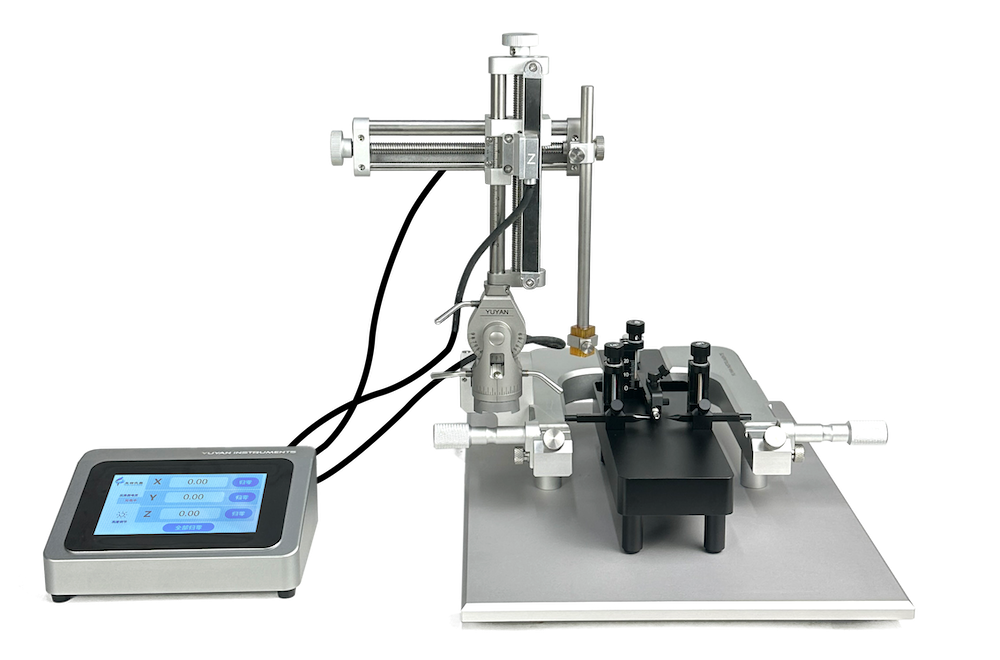
標準型腦立體定位儀由底座、U型架、轉軸、十字操作臂、耳桿、適配器及夾持器組成。
數字型號的腦立體定位儀,能直觀的顯示出定位儀的三維坐標,并可以按鍵歸零,移動操作臂后,顯示特定位置的新的坐標,通過選配不同動物適配器可用于不同的小動物實驗。
具有以下優勢:
· 標尺易讀數
· 移動平滑
· 三軸調節
· 電生理操作方便
· 配件多樣,可選配各種動物適配器,麻醉罩以及顱鉆
產品特點
經典設計,精準操控:
○ 十字臂升級為三桿固定,雙側貫通,精準穩固,旋轉采用類轉軸設計,三年免校準,磨損小、定位準
○ 經典U型底座設計,外觀簡潔、精巧,安裝和調節方便、靈活
○ 新增螺旋調節耳桿,微米級位移細調,定位更準確;卸載螺旋旋鈕時則可粗調耳桿

三軸移動,自由旋轉:
○ XYZ三坐標移動范圍0-80mm,讀數精度≤0.1mm,可進行三維空間的準確定位以及角度的旋轉調節
○ 水平方向360°,垂直方向180°旋轉并隨時鎖定任意位置,旋轉支座升級螺釘調節、十字臂垂直度控制在0.15mm以內
○ 升級為數顯型后讀數精度可以達到0.01mm

精良工藝,保駕護航:
○ 進口設備加工,特殊表面處理工藝,耐腐蝕,可長期保持良好的清潔度,不同溫度下操作仍可保持良好的精確性與靈活性
○ 操作臂防跌落設計,防止操作失誤對儀器造成損壞
○ 特殊工藝處理的刻度部件,可消除讀數產生的疲勞感
○ 預留雙操作位,支持雙操作臂工作模式,方便同時進行多種實驗,可升級空間大
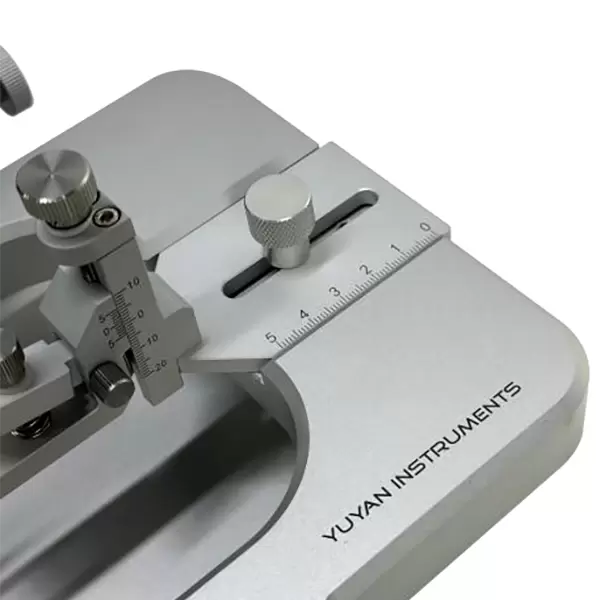
多選擇,高適配:
○ 可選配不同動物適配器大鼠、小鼠及幼大鼠等
○ 適配器鼻固定處采用曲線設計,頭部固定緊密可靠
○ 可配套微量注射泵、顯微攝像裝置、顱鉆、氣體麻醉機使用

應用領域
神經環路研究:將病毒載體注射至特定腦區,研究神經回路如何調控行為、記憶、情緒等功能
疾病模型建立:將誘導藥物、腫瘤細胞等注射至特定腦區,構建帕金森氏病、癲癇、腦內腫瘤等疾病模型
神經元記錄和電生理實驗:利用腦立體定位儀精準定位植入電極,記錄該腦區的神經元活動
光遺傳學研究:利用腦立體定位儀精確植入光纖到特定腦區,然后通過光刺激來激活或抑制特定神經元
產品特點:
· 操作靈活、簡便,標配大鼠適配器;
· 腦立體定位儀標尺是由激光雕刻,清晰易讀,精確度為0.1mm;
· 腦立體定位儀操作臂移動范圍(上下,左右,前后):三方向移動距離80mm;
· 垂直方向可90度轉動,并隨時鎖定位置;
· 擴充能力很強,可增加操作臂,增加注射裝置及顱鉆等;
· 可以根據需要增加不同的固定器,用于多種動物;
小動物腦立體定位儀部分參考文獻:
1. Albéri, L., Lintas, A., Kretz, R., Schwaller, B., & Villa, A. E. (2013). The calcium-binding protein parvalbumin modulates the firing 1 properties of the reticular thalamic nucleus bursting neurons. Journal of neurophysiology, 109(11), 2827-2841.
2. Sonati, T., Reimann, R. R., Falsig, J., Baral, P. K., O’Connor, T., Hornemann, S., Aguzzi, A. (2013). The toxicity of antiprion antibodies is mediated by the flexible tail of the prion protein. Nature, 501(7465), 102-106.
3. Ali, I., O’Brien, P., Kumar, G., Zheng, T., Jones, N. C., Pinault, D., O’Brien, T. J. (2013). Enduring Effects of Early Life Stress on Firing Patterns of Hippocampal and Thalamocortical Neurons in Rats: Implications for Limbic Epilepsy. PLOS ONE, 8(6), e66962.
4. Bell, L. A., Bell, K. A., & McQuiston, A. R. (2013). Synaptic Muscarinic Response Types in Hippocampal CA1 Interneurons Depend on Different Levels of Presynaptic Activity and Different Muscarinic Receptor Subtypes. Neuropharmacology.
5. Bolzoni, F., B?czyk, M., & Jankowska, E. (2013). Subcortical effects of transcranial direct current stimulation (tDCS) in the rat. The Journal of Physiology.
6. Bolzoni, F., B?czyk, M., & Jankowska, E. (2013). Subcortical effects of transcranial direct current stimulation (tDCS) in the rat. The Journal of Physiology.
7. Babaei, P., Tehrani, B. S., & Alizadeh, A. (2013). Effect of BDNF and adipose derived stem cells transplantation on cognitive deficit in Alzheimer model of rats. Journal of Behavioral and Brain Science, 3, 156-161.
8. Gilmartin, M. R., Miyawaki, H., Helmstetter, F. J., & Diba, K. (2013). Prefrontal Activity Links Nonoverlapping Events in Memory. The Journal of Neuroscience, 33(26), 10910-10914.
9. Feng, L., Sametsky, E. A., Gusev, A. G., & Uteshev, V. V. (2012). Responsiveness to nicotine of neurons of the caudal nucleus of the solitary tract correlates with the neuronal projection target. Journal of Neurophysiology, 108(7), 1884-1894.
10. Clarner, T., Diederichs, F., Berger, K., Denecke, B., Gan, L., Van der Valk, P., Kipp, M. (2012). Myelin debris regulates inflammatory responses in an experimental demyelination animal model and multiple sclerosis lesions. Glia, 60(10), 1468-1480.
11. Girardet, C., Bonnet, M. S., Jdir, R., Sadoud, M., Thirion, S., Tardivel, C., Troadec, J. D. (2011). Central inflammation and sickness-like behavior induced by the food contaminant deoxynivalenol: A PGE2-independent mechanism.Toxicological Sciences, 124(1), 179-191.
12. Hru?ka-Plocháň, M., Juhas, S., Juhasova, J., Galik, J., Miyanohara, A., Marsala, M., Motlik, J. (2010). A27 Expression of the human mutant huntingtin in minipig striatum induced formation of EM48+ inclusions in the neuronal nuclei, cytoplasm and processes. Journal of Neurology, Neurosurgery & Psychiatry, 81(Suppl 1), A9-A9.
13. Brooks, S., Jones, L., & Dunnett, S. B. (2010). A29 Frontostriatal pathology in the (C57BL/6J) YAC128 mouse uncovered by the operant delayed alternation task. Journal of Neurology, Neurosurgery & Psychiatry, 81(Suppl 1), A9-A10.
14. Yu, L., Metzger, S., Clemens, L. E., Ehrismann, J., Ott, T., Gu, X., Nguyen, H. P. (2010). A28 Accumulation and aggregation of human mutant huntingtin and neuron atrophy in BAC-HD transgenic rat. Journal of Neurology, Neurosurgery & Psychiatry, 81(Suppl 1), A9-A9.
15. Baxa, M., Juhas, S., Pavlok, A., Vodicka, P., Juhasova, J., Hru?ka-Plocháň, M., Motlik, J. (2010). A26 Transgenic miniature pig as an animal model for Huntington’s disease. Journal of Neurology, Neurosurgery & Psychiatry, 81(Suppl 1), A8-A9.小鼠腦立體定位儀
小鼠腦立體定位儀(小鼠雙臂腦立體定位儀,小鼠單臂腦立體定位儀,數顯型腦立體定位儀)(根據需求不同,有多種不同的型號可供選擇:單臂型,雙臂型,數顯型,數控型,敬請來電咨詢)021-35183767 公眾號
公眾號 關注我們
關注我們 產品詳情
產品詳情小鼠腦立體定位儀是專門為小鼠準備的定位儀,是為敲除基因小鼠實驗和轉基因小鼠實驗設計的。它是一款體積較小和比較經濟的定位設備。
主要配置:包含3軸左手操作臂,小鼠嘴夾和齒桿,雙面耳桿,和一個角夾探頭支架。
小鼠型的腦立體定位儀采用了三大技術來牢固固定小鼠頭部:
1、輕質的聚甲醛樹脂耳棒,前端逐漸變細;
2、特殊設計的下頜夾持器;
3、非植入性橡膠頭;
耳棒的高度可單獨調節,垂直方向的刻度采用了激光雕刻技術,能夠非常新晰的讀出耳棒的高度。
1. 可以同時定位新生鼠和小型嚙齒類動物
2. 底座尺寸:25cmx25cm
3. 兼容氣體麻醉機
4. 耳棒和牙棒的高度調整適合10-75g小鼠
5. Delrin?材料的耳棒,更適合于小鼠實驗操作
6. 三維操作臂可以精確定位
7. 支持雙操作臂工作模式
8. 可選數顯模式
9. 可選全自動模式
10. 精確度標準型100um,數顯型10um
根據需求不同,有多種不同的型號可供選擇:

標準型小鼠腦定位儀 型號:SA-100

便攜式小鼠定位儀 型號:SA-130M

數顯型腦定位儀 型號:SA-150

標準型腦立體定位儀由底座、U型架、轉軸、十字操作臂、耳桿、適配器及夾持器組成。
數字型號的腦立體定位儀,能直觀的顯示出定位儀的三維坐標,并可以按鍵歸零,移動操作臂后,顯示特定位置的新的坐標,通過選配不同動物適配器可用于不同的小動物實驗。
具有以下優勢:
· 標尺易讀數
· 移動平滑
· 三軸調節
· 電生理操作方便
· 配件多樣,可選配各種動物適配器,麻醉罩以及顱鉆
產品特點
經典設計,精準操控:
○ 十字臂升級為三桿固定,雙側貫通,精準穩固,旋轉采用類轉軸設計,三年免校準,磨損小、定位準
○ 經典U型底座設計,外觀簡潔、精巧,安裝和調節方便、靈活
○ 新增螺旋調節耳桿,微米級位移細調,定位更準確;卸載螺旋旋鈕時則可粗調耳桿

三軸移動,自由旋轉:
○ XYZ三坐標移動范圍0-80mm,讀數精度≤0.1mm,可進行三維空間的準確定位以及角度的旋轉調節
○ 水平方向360°,垂直方向180°旋轉并隨時鎖定任意位置,旋轉支座升級螺釘調節、十字臂垂直度控制在0.15mm以內
○ 升級為數顯型后讀數精度可以達到0.01mm

精良工藝,保駕護航:
○ 進口設備加工,特殊表面處理工藝,耐腐蝕,可長期保持良好的清潔度,不同溫度下操作仍可保持良好的精確性與靈活性
○ 操作臂防跌落設計,防止操作失誤對儀器造成損壞
○ 特殊工藝處理的刻度部件,可消除讀數產生的疲勞感
○ 預留雙操作位,支持雙操作臂工作模式,方便同時進行多種實驗,可升級空間大

多選擇,高適配:
○ 可選配不同動物適配器大鼠、小鼠及幼大鼠等
○ 適配器鼻固定處采用曲線設計,頭部固定緊密可靠
○ 可配套微量注射泵、顯微攝像裝置、顱鉆、氣體麻醉機使用

應用領域
神經環路研究:將病毒載體注射至特定腦區,研究神經回路如何調控行為、記憶、情緒等功能
疾病模型建立:將誘導藥物、腫瘤細胞等注射至特定腦區,構建帕金森氏病、癲癇、腦內腫瘤等疾病模型
神經元記錄和電生理實驗:利用腦立體定位儀精準定位植入電極,記錄該腦區的神經元活動
光遺傳學研究:利用腦立體定位儀精確植入光纖到特定腦區,然后通過光刺激來激活或抑制特定神經元
產品特點:
· 操作靈活、簡便,標配大鼠適配器;
· 腦立體定位儀標尺是由激光雕刻,清晰易讀,精確度為0.1mm;
· 腦立體定位儀操作臂移動范圍(上下,左右,前后):三方向移動距離80mm;
· 垂直方向可90度轉動,并隨時鎖定位置;
· 擴充能力很強,可增加操作臂,增加注射裝置及顱鉆等;
· 可以根據需要增加不同的固定器,用于多種動物;
小動物腦立體定位儀部分參考文獻:
1. Albéri, L., Lintas, A., Kretz, R., Schwaller, B., & Villa, A. E. (2013). The calcium-binding protein parvalbumin modulates the firing 1 properties of the reticular thalamic nucleus bursting neurons. Journal of neurophysiology, 109(11), 2827-2841.
2. Sonati, T., Reimann, R. R., Falsig, J., Baral, P. K., O’Connor, T., Hornemann, S., Aguzzi, A. (2013). The toxicity of antiprion antibodies is mediated by the flexible tail of the prion protein. Nature, 501(7465), 102-106.
3. Ali, I., O’Brien, P., Kumar, G., Zheng, T., Jones, N. C., Pinault, D., O’Brien, T. J. (2013). Enduring Effects of Early Life Stress on Firing Patterns of Hippocampal and Thalamocortical Neurons in Rats: Implications for Limbic Epilepsy. PLOS ONE, 8(6), e66962.
4. Bell, L. A., Bell, K. A., & McQuiston, A. R. (2013). Synaptic Muscarinic Response Types in Hippocampal CA1 Interneurons Depend on Different Levels of Presynaptic Activity and Different Muscarinic Receptor Subtypes. Neuropharmacology.
5. Bolzoni, F., B?czyk, M., & Jankowska, E. (2013). Subcortical effects of transcranial direct current stimulation (tDCS) in the rat. The Journal of Physiology.
6. Bolzoni, F., B?czyk, M., & Jankowska, E. (2013). Subcortical effects of transcranial direct current stimulation (tDCS) in the rat. The Journal of Physiology.
7. Babaei, P., Tehrani, B. S., & Alizadeh, A. (2013). Effect of BDNF and adipose derived stem cells transplantation on cognitive deficit in Alzheimer model of rats. Journal of Behavioral and Brain Science, 3, 156-161.
8. Gilmartin, M. R., Miyawaki, H., Helmstetter, F. J., & Diba, K. (2013). Prefrontal Activity Links Nonoverlapping Events in Memory. The Journal of Neuroscience, 33(26), 10910-10914.
9. Feng, L., Sametsky, E. A., Gusev, A. G., & Uteshev, V. V. (2012). Responsiveness to nicotine of neurons of the caudal nucleus of the solitary tract correlates with the neuronal projection target. Journal of Neurophysiology, 108(7), 1884-1894.
10. Clarner, T., Diederichs, F., Berger, K., Denecke, B., Gan, L., Van der Valk, P., Kipp, M. (2012). Myelin debris regulates inflammatory responses in an experimental demyelination animal model and multiple sclerosis lesions. Glia, 60(10), 1468-1480.
11. Girardet, C., Bonnet, M. S., Jdir, R., Sadoud, M., Thirion, S., Tardivel, C., Troadec, J. D. (2011). Central inflammation and sickness-like behavior induced by the food contaminant deoxynivalenol: A PGE2-independent mechanism.Toxicological Sciences, 124(1), 179-191.
12. Hru?ka-Plocháň, M., Juhas, S., Juhasova, J., Galik, J., Miyanohara, A., Marsala, M., Motlik, J. (2010). A27 Expression of the human mutant huntingtin in minipig striatum induced formation of EM48+ inclusions in the neuronal nuclei, cytoplasm and processes. Journal of Neurology, Neurosurgery & Psychiatry, 81(Suppl 1), A9-A9.
13. Brooks, S., Jones, L., & Dunnett, S. B. (2010). A29 Frontostriatal pathology in the (C57BL/6J) YAC128 mouse uncovered by the operant delayed alternation task. Journal of Neurology, Neurosurgery & Psychiatry, 81(Suppl 1), A9-A10.
14. Yu, L., Metzger, S., Clemens, L. E., Ehrismann, J., Ott, T., Gu, X., Nguyen, H. P. (2010). A28 Accumulation and aggregation of human mutant huntingtin and neuron atrophy in BAC-HD transgenic rat. Journal of Neurology, Neurosurgery & Psychiatry, 81(Suppl 1), A9-A9.
15. Baxa, M., Juhas, S., Pavlok, A., Vodicka, P., Juhasova, J., Hru?ka-Plocháň, M., Motlik, J. (2010). A26 Transgenic miniature pig as an animal model for Huntington’s disease. Journal of Neurology, Neurosurgery & Psychiatry, 81(Suppl 1), A8-A9.更多推薦 選擇區號
選擇區號

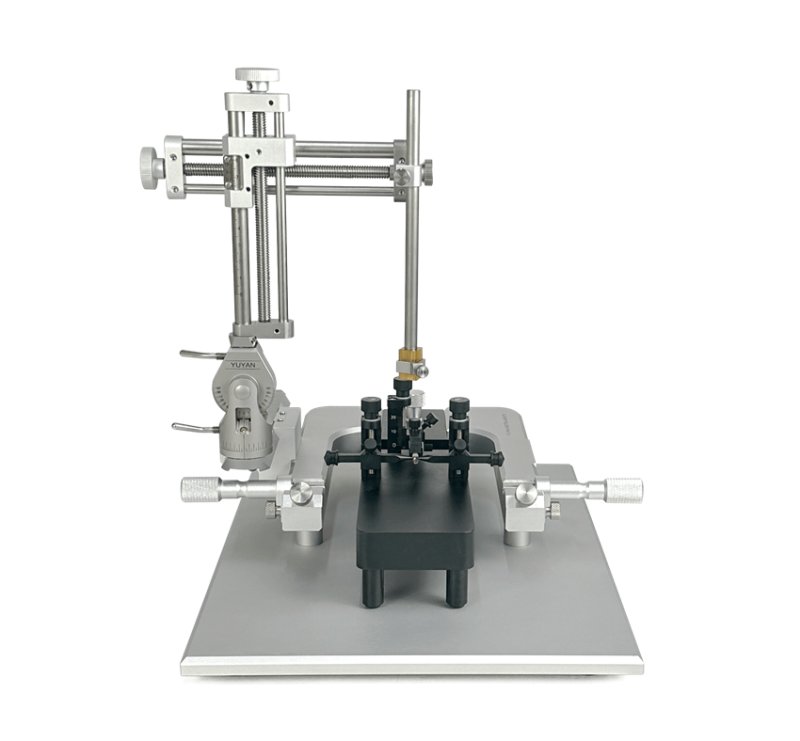

 瀏覽器自帶分享功能也很好用哦~
瀏覽器自帶分享功能也很好用哦~